







Arsenic is a highly toxic metalloid currently present in pesticides, insecticides, and herbicides. Its association with mortality and death has been perpetuated by its historic use as a murder weapon, but in ancient alchemical rituals arsenic was used for both medicinal and magical cures as well as to bring about a trance-like state for enlightenment purposes.
Widely used by early alchemists, arsenic derives its name from Aramaic word Zarniqa and Zarnikh, which meant ‘yellow’ in Persian. The element, which comes in shades of gray, yellow, and black, is often symbolized by a swan.
The choice of symbol arises from the opinion that arsenic was not only a poison but also a substance ‘evolving’ between alchemical stages the way a duckling transforms into a swan. It is found in several ancient alchemical recipes: the Physika et Mystika (the earliest known text on alchemy) recommends that arsenic is used to whiten copper.
In the 13th century alchemist, Albertus Magnus produced the first instance of metallic arsenic. The alchemic symbols for the substance were soon changed to reflect its toxic aspects, but thanks to its transformation effects, arsenic continues to be represented by a swan in the alchemists’ world of symbols.
In alchemy, arsenic is often represented by a swan or swans. This is because, as a metalloid, arsenic is capable of transforming its physical appearance (a metallic-gray solid or a yellow crystalline solid), the same way a cygnet transforms into a swan. Its symbol is a pair of overlapping triangles.
Text obtained from:
https://blog.prepscholar.com/alchemy-symbols
https://www.ancient-symbols.com/symbols-directory/arsenic.html


Arsenic is a highly toxic metalloid currently present in pesticides, insecticides, and herbicides. Its association with mortality and death has been perpetuated by its historic use as a murder weapon, but in ancient alchemical rituals arsenic was used for both medicinal and magical cures as well as to bring about a trance-like state for enlightenment purposes.
Widely used by early alchemists, arsenic derives its name from Aramaic word Zarniqa and Zarnikh, which meant ‘yellow’ in Persian. The element, which comes in shades of gray, yellow, and black, is often symbolized by a swan.
The choice of symbol arises from the opinion that arsenic was not only a poison but also a substance ‘evolving’ between alchemical stages the way a duckling transforms into a swan. It is found in several ancient alchemical recipes: the Physika et Mystika (the earliest known text on alchemy) recommends that arsenic is used to whiten copper.
In the 13th century alchemist, Albertus Magnus produced the first instance of metallic arsenic. The alchemic symbols for the substance were soon changed to reflect its toxic aspects, but thanks to its transformation effects, arsenic continues to be represented by a swan in the alchemists’ world of symbols.
In alchemy, arsenic is often represented by a swan or swans. This is because, as a metalloid, arsenic is capable of transforming its physical appearance (a metallic-gray solid or a yellow crystalline solid), the same way a cygnet transforms into a swan. Its symbol is a pair of overlapping triangles.
Text obtained from:
https://blog.prepscholar.com/alchemy-symbols
https://www.ancient-symbols.com/symbols-directory/arsenic.html


Bismuth metal has been known since ancient times, although it was often confused with lead and tin, which share some physical properties. It’s alchemical symbol looks like an “8” that is open at the top. The etymology is uncertain, but possibly comes from Arabic bi ismid, meaning "having the properties of antimony",[6] or from the German words weiße Masse or Wismuth ("white mass"), translated in the mid-sixteenth century to New Latin bisemutum or bisemutium.[7][8][9]
The name bismuth dates from around the 1660s, and is of uncertain etymology. It is one of the first 10 metals to have been discovered. Bismuth appears in the 1660s, from obsolete German Bismuth, Wismut, Wissmuth (early 16th century); perhaps related to Old High German hwiz ("white").[7] The New Latin bisemutium (due to Georgius Agricola, who Latinized many German mining and technical words) is from the German Wismuth, perhaps from weiße Masse, "white mass".[9] The element was confused in early times with tin and lead because of its resemblance to those elements. Bismuth has been known since ancient times, so no one person is credited with its discovery. Agricola, in De Natura Fossilium (c. 1546) states that bismuth is a distinct metal in a family of metals including tin and lead. This was based on observation of the metals and their physical properties.[10] Miners in the age of alchemy also gave bismuth the name tectum argenti, or "silver being made," in the sense of silver still in the process of being formed within the Earth.[11][12][13]
Text obtained from:
https://en.wikipedia.org/wiki/Bismuth


Bismuth metal has been known since ancient times, although it was often confused with lead and tin, which share some physical properties. It’s alchemical symbol looks like an “8” that is open at the top. The etymology is uncertain, but possibly comes from Arabic bi ismid, meaning "having the properties of antimony",[6] or from the German words weiße Masse or Wismuth ("white mass"), translated in the mid-sixteenth century to New Latin bisemutum or bisemutium.[7][8][9]
The name bismuth dates from around the 1660s, and is of uncertain etymology. It is one of the first 10 metals to have been discovered. Bismuth appears in the 1660s, from obsolete German Bismuth, Wismut, Wissmuth (early 16th century); perhaps related to Old High German hwiz ("white").[7] The New Latin bisemutium (due to Georgius Agricola, who Latinized many German mining and technical words) is from the German Wismuth, perhaps from weiße Masse, "white mass".[9] The element was confused in early times with tin and lead because of its resemblance to those elements. Bismuth has been known since ancient times, so no one person is credited with its discovery. Agricola, in De Natura Fossilium (c. 1546) states that bismuth is a distinct metal in a family of metals including tin and lead. This was based on observation of the metals and their physical properties.[10] Miners in the age of alchemy also gave bismuth the name tectum argenti, or "silver being made," in the sense of silver still in the process of being formed within the Earth.[11][12][13]
Text obtained from:
https://en.wikipedia.org/wiki/Bismuth
Gold is one of the seven metals of alchemy (gold, silver, mercury, copper, lead, iron & tin). For the alchemist, it represented the perfection of all matter on any level, including that of the mind, spirit, and soul. The symbol for gold could also be used to represent the sun in astrology.
The production of gold from a more common element, such as lead, has long been a subject of human inquiry, and the ancient and medieval discipline of alchemy often focused on it; however, the transmutation of the chemical elements did not become possible until the understanding of nuclear physics in the 20th century. The first synthesis of gold was conducted by Japanese physicist Hantaro Nagaoka, who synthesized gold from mercury in 1924 by neutron bombardment.[27] An American team, working without knowledge of Nagaoka's prior study, conducted the same experiment in 1941, achieving the same result and showing that the isotopes of gold produced by it were all radioactive.[28]
Gold can currently be manufactured in a nuclear reactor by irradiation either of platinum or mercury.
Text obtained from:
https://www.rsc.org/periodic-table/alchemy/79/gold
https://en.wikipedia.org/wiki/Gold


Gold is one of the seven metals of alchemy (gold, silver, mercury, copper, lead, iron & tin). For the alchemist, it represented the perfection of all matter on any level, including that of the mind, spirit, and soul. The symbol for gold could also be used to represent the sun in astrology.
The production of gold from a more common element, such as lead, has long been a subject of human inquiry, and the ancient and medieval discipline of alchemy often focused on it; however, the transmutation of the chemical elements did not become possible until the understanding of nuclear physics in the 20th century. The first synthesis of gold was conducted by Japanese physicist Hantaro Nagaoka, who synthesized gold from mercury in 1924 by neutron bombardment.[27] An American team, working without knowledge of Nagaoka's prior study, conducted the same experiment in 1941, achieving the same result and showing that the isotopes of gold produced by it were all radioactive.[28]
Gold can currently be manufactured in a nuclear reactor by irradiation either of platinum or mercury.
Text obtained from:
https://www.rsc.org/periodic-table/alchemy/79/gold
https://en.wikipedia.org/wiki/Gold

The name Phosphorus in Ancient Greece was the name for the planet Venus and is derived from the Greek words (φῶς = light, φέρω = carry), which roughly translates as light-bringer or light carrier.[15] (In Greek mythology and tradition, Augerinus (Αυγερινός = morning star, still in use today), Hesperus or Hesperinus (΄Εσπερος or Εσπερινός or Αποσπερίτης = evening star, still in use today) and Eosphorus (Εωσφόρος = dawnbearer, not in use for the planet after Christianity) are close homologues, and also associated with Phosphorus-the-planet).
According to the Oxford English Dictionary, the correct spelling of the element is phosphorus. The word phosphorous is the adjectival form of the P3+ valence: so, just as sulfur forms sulfurous and sulfuric compounds, phosphorus forms phosphorous compounds (e.g., phosphorous acid) and P5+ valence phosphoric compounds (e.g., phosphoric acids and phosphates). Phosphorus was an important element for alchemists because it appeared to have the ability to capture light. (When the white form of phosphorus oxidizes, it glows green.) It represented the spirit, and its symbol is typically a triangle atop a double cross.
Text obtained from:
https://en.wikipedia.org/wiki/Phosphorus
https://blog.prepscholar.com/alchemy-symbols


The name Phosphorus in Ancient Greece was the name for the planet Venus and is derived from the Greek words (φῶς = light, φέρω = carry), which roughly translates as light-bringer or light carrier.[15] (In Greek mythology and tradition, Augerinus (Αυγερινός = morning star, still in use today), Hesperus or Hesperinus (΄Εσπερος or Εσπερινός or Αποσπερίτης = evening star, still in use today) and Eosphorus (Εωσφόρος = dawnbearer, not in use for the planet after Christianity) are close homologues, and also associated with Phosphorus-the-planet).
According to the Oxford English Dictionary, the correct spelling of the element is phosphorus. The word phosphorous is the adjectival form of the P3+ valence: so, just as sulfur forms sulfurous and sulfuric compounds, phosphorus forms phosphorous compounds (e.g., phosphorous acid) and P5+ valence phosphoric compounds (e.g., phosphoric acids and phosphates). Phosphorus was an important element for alchemists because it appeared to have the ability to capture light. (When the white form of phosphorus oxidizes, it glows green.) It represented the spirit, and its symbol is typically a triangle atop a double cross.
Text obtained from:
https://en.wikipedia.org/wiki/Phosphorus
https://blog.prepscholar.com/alchemy-symbols


Salt is now known to be a chemical compound comprised of sodium and chloride, but alchemists believed it was a single element. Salt represents the body, as well as physical matter in general, crystallization, and condensation. Salt is often impure when first collected, but through chemical processes it can be dissolved and purified, which some alchemists compared to purification processes the human body can undergo. Its symbol is a circle bisected by a horizontal line.
Some of the earliest evidence of salt processing dates to around 6,000 BC, when people living in the area of present-day Romania boiled spring water to extract salts; a salt-works in China dates to approximately the same period. Salt was also prized by the ancient Hebrews, the Greeks, the Romans, the Byzantines, the Hittites, Egyptians, and the Indians. Salt became an important article of trade and was transported by boat across the Mediterranean Sea, along specially built salt roads, and across the Sahara on camel caravans. The scarcity and universal need for salt have led nations to go to war over it and use it to raise tax revenues. Salt is used in religious ceremonies and has other cultural and traditional significance.
Some of the earliest evidence of salt processing dates to around 6,000 BC, when people living in the area of present-day Romania boiled spring water to extract salts; a salt-works in China dates to approximately the same period. Salt was also prized by the ancient Hebrews, the Greeks, the Romans, the Byzantines, the Hittites, Egyptians, and the Indians. Salt became an important article of trade and was transported by boat across the Mediterranean Sea, along specially built salt roads, and across the Sahara on camel caravans. The scarcity and universal need for salt have led nations to go to war over it and use it to raise tax revenues. Salt is used in religious ceremonies and has other cultural and traditional significance.
Text obtained from:
https://blog.prepscholar.com/alchemy-symbols
https://en.wikipedia.org/wiki/Salt


Salt is now known to be a chemical compound comprised of sodium and chloride, but alchemists believed it was a single element. Salt represents the body, as well as physical matter in general, crystallization, and condensation. Salt is often impure when first collected, but through chemical processes it can be dissolved and purified, which some alchemists compared to purification processes the human body can undergo. Its symbol is a circle bisected by a horizontal line.
Some of the earliest evidence of salt processing dates to around 6,000 BC, when people living in the area of present-day Romania boiled spring water to extract salts; a salt-works in China dates to approximately the same period. Salt was also prized by the ancient Hebrews, the Greeks, the Romans, the Byzantines, the Hittites, Egyptians, and the Indians. Salt became an important article of trade and was transported by boat across the Mediterranean Sea, along specially built salt roads, and across the Sahara on camel caravans. The scarcity and universal need for salt have led nations to go to war over it and use it to raise tax revenues. Salt is used in religious ceremonies and has other cultural and traditional significance.
Some of the earliest evidence of salt processing dates to around 6,000 BC, when people living in the area of present-day Romania boiled spring water to extract salts; a salt-works in China dates to approximately the same period. Salt was also prized by the ancient Hebrews, the Greeks, the Romans, the Byzantines, the Hittites, Egyptians, and the Indians. Salt became an important article of trade and was transported by boat across the Mediterranean Sea, along specially built salt roads, and across the Sahara on camel caravans. The scarcity and universal need for salt have led nations to go to war over it and use it to raise tax revenues. Salt is used in religious ceremonies and has other cultural and traditional significance.
Text obtained from:
https://blog.prepscholar.com/alchemy-symbols
https://en.wikipedia.org/wiki/Salt

Sulfur represents properties such as dryness, heat, and masculinity. In alchemy, it could also represent evaporation, expansion, and dissolution. In terms of human body, it represented the soul. In terms of the tria prima, sulfur was seen as the middling element connecting salt (high) and mercury (low).
Sulfur, also known as brimstone, is the active male counterpart to mercury’s passive female representation. In antiquity, it was used as traditional medicine in places ranging from China to Egypt to Europe. It’s mentioned in both the Torah and the Bible, the latter of which states that Hell smells like sulfur.
Being abundantly available in native form, sulfur was known in ancient times and is referred to in the Torah (Genesis). English translations of the Bible commonly referred to burning sulfur as "brimstone", giving rise to the term "fire-and-brimstone" sermons, in which listeners are reminded of the fate of eternal damnation that await the unbelieving and unrepentant. It is from this part of the Bible that Hell is implied to "smell of sulfur" (likely due to its association with volcanic activity). According to the Ebers Papyrus, a sulfur ointment was used in ancient Egypt to treat granular eyelids. Sulfur was used for fumigation in preclassical Greece;[37] this is mentioned in the Odyssey.[38] Pliny the Elder discusses sulfur in book 35 of his Natural History, saying that its best-known source is the island of Melos. He mentions its use for fumigation, medicine, and bleaching cloth.[39]
A natural form of sulfur known as shiliuhuang (石硫黄) was known in China since the 6th century BC and found in Hanzhong.[40] By the 3rd century, the Chinese discovered that sulfur could be extracted from pyrite.[40] Chinese Daoists were interested in sulfur's flammability and its reactivity with certain metals, yet its earliest practical uses were found in traditional Chinese medicine.[40] A Song dynasty military treatise of 1044 AD described various formulas for Chinese black powder, which is a mixture of potassium nitrate (KNO
3), charcoal, and sulfur. It remains an ingredient of black gunpowder.
Indian alchemists, practitioners of "the science of chemicals" (sanskrit rasaśāstra, रसशास्त्र), wrote extensively about the use of sulfur in alchemical operations with mercury, from the eighth century AD onwards.[41] In the rasaśāstra tradition, sulfur is called "the smelly" (sanskrit gandhaka, गन्धक).
Early European alchemists gave sulfur a unique alchemical symbol, a triangle at the top of a cross. In traditional skin treatment, elemental sulfur was used (mainly in creams) to alleviate such conditions as scabies, ringworm, psoriasis, eczema, and acne. The mechanism of action is unknown—though elemental sulfur does oxidize slowly to sulfurous acid, which is (through the action of sulfite) a mild reducing and antibacterial agent.[42][43][44]
Text obtained from:
https://en.wikipedia.org/wiki/Sulfur
https://blog.prepscholar.com/alchemy-symbols


Sulfur represents properties such as dryness, heat, and masculinity. In alchemy, it could also represent evaporation, expansion, and dissolution. In terms of human body, it represented the soul. In terms of the tria prima, sulfur was seen as the middling element connecting salt (high) and mercury (low).
Sulfur, also known as brimstone, is the active male counterpart to mercury’s passive female representation. In antiquity, it was used as traditional medicine in places ranging from China to Egypt to Europe. It’s mentioned in both the Torah and the Bible, the latter of which states that Hell smells like sulfur.
Being abundantly available in native form, sulfur was known in ancient times and is referred to in the Torah (Genesis). English translations of the Bible commonly referred to burning sulfur as "brimstone", giving rise to the term "fire-and-brimstone" sermons, in which listeners are reminded of the fate of eternal damnation that await the unbelieving and unrepentant. It is from this part of the Bible that Hell is implied to "smell of sulfur" (likely due to its association with volcanic activity). According to the Ebers Papyrus, a sulfur ointment was used in ancient Egypt to treat granular eyelids. Sulfur was used for fumigation in preclassical Greece;[37] this is mentioned in the Odyssey.[38] Pliny the Elder discusses sulfur in book 35 of his Natural History, saying that its best-known source is the island of Melos. He mentions its use for fumigation, medicine, and bleaching cloth.[39]
A natural form of sulfur known as shiliuhuang (石硫黄) was known in China since the 6th century BC and found in Hanzhong.[40] By the 3rd century, the Chinese discovered that sulfur could be extracted from pyrite.[40] Chinese Daoists were interested in sulfur's flammability and its reactivity with certain metals, yet its earliest practical uses were found in traditional Chinese medicine.[40] A Song dynasty military treatise of 1044 AD described various formulas for Chinese black powder, which is a mixture of potassium nitrate (KNO
3), charcoal, and sulfur. It remains an ingredient of black gunpowder.
Indian alchemists, practitioners of "the science of chemicals" (sanskrit rasaśāstra, रसशास्त्र), wrote extensively about the use of sulfur in alchemical operations with mercury, from the eighth century AD onwards.[41] In the rasaśāstra tradition, sulfur is called "the smelly" (sanskrit gandhaka, गन्धक).
Early European alchemists gave sulfur a unique alchemical symbol, a triangle at the top of a cross. In traditional skin treatment, elemental sulfur was used (mainly in creams) to alleviate such conditions as scabies, ringworm, psoriasis, eczema, and acne. The mechanism of action is unknown—though elemental sulfur does oxidize slowly to sulfurous acid, which is (through the action of sulfite) a mild reducing and antibacterial agent.[42][43][44]
Text obtained from:
https://en.wikipedia.org/wiki/Sulfur
https://blog.prepscholar.com/alchemy-symbols

Zinc was distinctly recognized as a metal under the designation of Yasada or Jasada in the medical Lexicon ascribed to the Hindu king Madanapala (of Taka dynasty) and written about the year 1374.[67] Smelting and extraction of impure zinc by reducing calamine with wool and other organic substances was accomplished in the 13th century in India.[12][68] The Chinese did not learn of the technique until the 17th century.[68]
Alchemists burned zinc metal in air and collected the resulting zinc oxide on a condenser. Some alchemists called this zinc oxide lana philosophica, Latin for "philosopher's wool", because it collected in wooly tufts, whereas others thought it looked like white snow and named it nix album.[69]
The name of the metal was probably first documented by Paracelsus, a Swiss-born German alchemist, who referred to the metal as "zincum" or "zinken" in his book Liber Mineralium II, in the 16th century.[68][70] The word is probably derived from the German zinke, and supposedly meant "tooth-like, pointed or jagged" (metallic zinc crystals have a needle-like appearance).[71] Zink could also imply "tin-like" because of its relation to German zinn meaning tin.[72] Yet another possibility is that the word is derived from the Persian word سنگ seng meaning stone.[73] The metal was also called Indian tin, tutanego, calamine, and spinter.[19]
German metallurgist Andreas Libavius received a quantity of what he called "calay" of Malabar from a cargo ship captured from the Portuguese in 1596.[74] Libavius described the properties of the sample, which may have been zinc. Zinc was regularly imported to Europe from the Orient in the 17th and early 18th centuries,[68] but was at times very expensive.
Various isolated examples of the use of impure zinc in ancient times have been discovered. Zinc ores were used to make the zinc–copper alloy brass thousands of years prior to the discovery of zinc as a separate element. Judean brass from the 14th to 10th centuries BC contains 23% zinc.[4]
Knowledge of how to produce brass spread to Ancient Greece by the 7th century BC, but few varieties were made. Ornaments made of alloys containing 80–90% zinc, with lead, iron, antimony, and other metals making up the remainder, have been found that are 2,500 years old.[19] A possibly prehistoric statuette containing 87.5% zinc was found in a Dacian archaeological site.[54]
The oldest known pills were made of the zinc carbonates hydrozincite and smithsonite. The pills were used for sore eyes and were found aboard the Roman ship Relitto del Pozzino, wrecked in 140 BC.[55][56]
The manufacture of brass was known to the Romans by about 30 BC. They made brass by heating powdered calamine (zinc silicate or carbonate), charcoal and copper together in a crucible.[57] The resulting calamine brass was then either cast or hammered into shape for use in weaponry.[58] Some coins struck by Romans in the Christian era are made of what is probably calamine brass.[59]
Strabo writing in the 1st century BC (but quoting a now lost work of the 4th century BC historian Theopompus) mentions "drops of false silver" which when mixed with copper make brass. This may refer to small quantities of zinc that is a by-product of smelting sulfide ores.[60] Zinc in such remnants in smelting ovens was usually discarded as it was thought to be worthless.[61]
The Berne zinc tablet is a votive plaque dating to Roman Gaul made of an alloy that is mostly zinc.
The Charaka Samhita, thought to have been written between 300 and 500 AD, mentions a metal which, when oxidized, produces pushpanjan, thought to be zinc oxide.[64] Zinc mines at Zawar, near Udaipur in India, have been active since the Mauryan period (c. 322 and 187 BCE). The smelting of metallic zinc here, however, appears to have begun around the 12th century AD.[65][66] One estimate is that this location produced an estimated million tonnes of metallic zinc and zinc oxide from the 12th to 16th centuries.[21] Another estimate gives a total production of 60,000 tonnes of metallic zinc over this period.[65] The Rasaratna Samuccaya, written in approximately the 13th century AD, mentions two types of zinc-containing ores: one used for metal extraction and another used for medicinal purposes.
Text obtained from:
https://en.wikipedia.org/wiki/Zinc


Zinc was distinctly recognized as a metal under the designation of Yasada or Jasada in the medical Lexicon ascribed to the Hindu king Madanapala (of Taka dynasty) and written about the year 1374.[67] Smelting and extraction of impure zinc by reducing calamine with wool and other organic substances was accomplished in the 13th century in India.[12][68] The Chinese did not learn of the technique until the 17th century.[68]
Alchemists burned zinc metal in air and collected the resulting zinc oxide on a condenser. Some alchemists called this zinc oxide lana philosophica, Latin for "philosopher's wool", because it collected in wooly tufts, whereas others thought it looked like white snow and named it nix album.[69]
The name of the metal was probably first documented by Paracelsus, a Swiss-born German alchemist, who referred to the metal as "zincum" or "zinken" in his book Liber Mineralium II, in the 16th century.[68][70] The word is probably derived from the German zinke, and supposedly meant "tooth-like, pointed or jagged" (metallic zinc crystals have a needle-like appearance).[71] Zink could also imply "tin-like" because of its relation to German zinn meaning tin.[72] Yet another possibility is that the word is derived from the Persian word سنگ seng meaning stone.[73] The metal was also called Indian tin, tutanego, calamine, and spinter.[19]
German metallurgist Andreas Libavius received a quantity of what he called "calay" of Malabar from a cargo ship captured from the Portuguese in 1596.[74] Libavius described the properties of the sample, which may have been zinc. Zinc was regularly imported to Europe from the Orient in the 17th and early 18th centuries,[68] but was at times very expensive.
Various isolated examples of the use of impure zinc in ancient times have been discovered. Zinc ores were used to make the zinc–copper alloy brass thousands of years prior to the discovery of zinc as a separate element. Judean brass from the 14th to 10th centuries BC contains 23% zinc.[4]
Knowledge of how to produce brass spread to Ancient Greece by the 7th century BC, but few varieties were made. Ornaments made of alloys containing 80–90% zinc, with lead, iron, antimony, and other metals making up the remainder, have been found that are 2,500 years old.[19] A possibly prehistoric statuette containing 87.5% zinc was found in a Dacian archaeological site.[54]
The oldest known pills were made of the zinc carbonates hydrozincite and smithsonite. The pills were used for sore eyes and were found aboard the Roman ship Relitto del Pozzino, wrecked in 140 BC.[55][56]
The manufacture of brass was known to the Romans by about 30 BC. They made brass by heating powdered calamine (zinc silicate or carbonate), charcoal and copper together in a crucible.[57] The resulting calamine brass was then either cast or hammered into shape for use in weaponry.[58] Some coins struck by Romans in the Christian era are made of what is probably calamine brass.[59]
Strabo writing in the 1st century BC (but quoting a now lost work of the 4th century BC historian Theopompus) mentions "drops of false silver" which when mixed with copper make brass. This may refer to small quantities of zinc that is a by-product of smelting sulfide ores.[60] Zinc in such remnants in smelting ovens was usually discarded as it was thought to be worthless.[61]
The Berne zinc tablet is a votive plaque dating to Roman Gaul made of an alloy that is mostly zinc.
The Charaka Samhita, thought to have been written between 300 and 500 AD, mentions a metal which, when oxidized, produces pushpanjan, thought to be zinc oxide.[64] Zinc mines at Zawar, near Udaipur in India, have been active since the Mauryan period (c. 322 and 187 BCE). The smelting of metallic zinc here, however, appears to have begun around the 12th century AD.[65][66] One estimate is that this location produced an estimated million tonnes of metallic zinc and zinc oxide from the 12th to 16th centuries.[21] Another estimate gives a total production of 60,000 tonnes of metallic zinc over this period.[65] The Rasaratna Samuccaya, written in approximately the 13th century AD, mentions two types of zinc-containing ores: one used for metal extraction and another used for medicinal purposes.
Text obtained from:
https://en.wikipedia.org/wiki/Zinc
"Eye"
Traditionally placed on women, Amazigh tattoo designs are extremely symbolic and are believed to induce fertility, to cure illnesses, and to protect against spirits or jnoun. Much of the time, Amazigh tattoos are placed near the eyes, mouth, and nose. The markings, tattooed on Amazigh girls beginning at a young age, acted as a rite of passage. After an Amazigh girl was tattooed, she became a woman with the potential of motherhood.
Tattoos followed Amazigh women throughout their lives. The first facial tattoo is called the “siyala” and is placed on the chin for fertility. At an early age, women also applied tattoos to protect from death and disease. Along with important milestones, such as with the onset of puberty or for fertility, women received more tattoos. Tattoos were also used to convey one’s social or marital status and portray beauty.
Many tattoo symbols have relationships with vegetation. The palm tree is a common facial tattoo, drawn as a straight line surrounded by dots that represent seeds. It is placed between the bottom lip and chin of a woman as a “siyala.”
The tattoo correlates with the Carthaginian goddess Tanit, who is the fertility, war, and lunar goddess to the Amazigh people. The tattoo is a symbol of fertility and regarded as one of the most beautiful symbols a woman could have on her face.
Tattoos relating to the animal world are correlated with female sexuality. Additionally, tattoos with diamond shapes, such as the eye or flower, were seen as a source of protection against evil spirits.
One of the most important facets of the designs was the way they connected women as they were passed from mother to daughter and between generations.
Text obtained from:
https://www.britannica.com/topic/Berber
https://en.wikipedia.org/wiki/Berbers
https://www.moroccoworldnews.com/2019/04/269903/tradition-amazigh-facial-tattoos/


"Eye"
Traditionally placed on women, Amazigh tattoo designs are extremely symbolic and are believed to induce fertility, to cure illnesses, and to protect against spirits or jnoun. Much of the time, Amazigh tattoos are placed near the eyes, mouth, and nose. The markings, tattooed on Amazigh girls beginning at a young age, acted as a rite of passage. After an Amazigh girl was tattooed, she became a woman with the potential of motherhood.
Tattoos followed Amazigh women throughout their lives. The first facial tattoo is called the “siyala” and is placed on the chin for fertility. At an early age, women also applied tattoos to protect from death and disease. Along with important milestones, such as with the onset of puberty or for fertility, women received more tattoos. Tattoos were also used to convey one’s social or marital status and portray beauty.
Many tattoo symbols have relationships with vegetation. The palm tree is a common facial tattoo, drawn as a straight line surrounded by dots that represent seeds. It is placed between the bottom lip and chin of a woman as a “siyala.”
The tattoo correlates with the Carthaginian goddess Tanit, who is the fertility, war, and lunar goddess to the Amazigh people. The tattoo is a symbol of fertility and regarded as one of the most beautiful symbols a woman could have on her face.
Tattoos relating to the animal world are correlated with female sexuality. Additionally, tattoos with diamond shapes, such as the eye or flower, were seen as a source of protection against evil spirits.
One of the most important facets of the designs was the way they connected women as they were passed from mother to daughter and between generations.
Text obtained from:
https://www.britannica.com/topic/Berber
https://en.wikipedia.org/wiki/Berbers
https://www.moroccoworldnews.com/2019/04/269903/tradition-amazigh-facial-tattoos/
"Frog"
Traditionally placed on women, Amazigh tattoo designs are extremely symbolic and are believed to induce fertility, to cure illnesses, and to protect against spirits or jnoun. Much of the time, Amazigh tattoos are placed near the eyes, mouth, and nose. The markings, tattooed on Amazigh girls beginning at a young age, acted as a rite of passage. After an Amazigh girl was tattooed, she became a woman with the potential of motherhood.
Tattoos followed Amazigh women throughout their lives. The first facial tattoo is called the “siyala” and is placed on the chin for fertility. At an early age, women also applied tattoos to protect from death and disease. Along with important milestones, such as with the onset of puberty or for fertility, women received more tattoos. Tattoos were also used to convey one’s social or marital status and portray beauty.
Many tattoo symbols have relationships with vegetation. The palm tree is a common facial tattoo, drawn as a straight line surrounded by dots that represent seeds. It is placed between the bottom lip and chin of a woman as a “siyala.”
The tattoo correlates with the Carthaginian goddess Tanit, who is the fertility, war, and lunar goddess to the Amazigh people. The tattoo is a symbol of fertility and regarded as one of the most beautiful symbols a woman could have on her face.
Tattoos relating to the animal world are correlated with female sexuality. Additionally, tattoos with diamond shapes, such as the eye or flower, were seen as a source of protection against evil spirits.
One of the most important facets of the designs was the way they connected women as they were passed from mother to daughter and between generations.
Text obtained from:
https://www.britannica.com/topic/Berber
https://en.wikipedia.org/wiki/Berbers
https://www.moroccoworldnews.com/2019/04/269903/tradition-amazigh-facial-tattoos/


"Frog"
Traditionally placed on women, Amazigh tattoo designs are extremely symbolic and are believed to induce fertility, to cure illnesses, and to protect against spirits or jnoun. Much of the time, Amazigh tattoos are placed near the eyes, mouth, and nose. The markings, tattooed on Amazigh girls beginning at a young age, acted as a rite of passage. After an Amazigh girl was tattooed, she became a woman with the potential of motherhood.
Tattoos followed Amazigh women throughout their lives. The first facial tattoo is called the “siyala” and is placed on the chin for fertility. At an early age, women also applied tattoos to protect from death and disease. Along with important milestones, such as with the onset of puberty or for fertility, women received more tattoos. Tattoos were also used to convey one’s social or marital status and portray beauty.
Many tattoo symbols have relationships with vegetation. The palm tree is a common facial tattoo, drawn as a straight line surrounded by dots that represent seeds. It is placed between the bottom lip and chin of a woman as a “siyala.”
The tattoo correlates with the Carthaginian goddess Tanit, who is the fertility, war, and lunar goddess to the Amazigh people. The tattoo is a symbol of fertility and regarded as one of the most beautiful symbols a woman could have on her face.
Tattoos relating to the animal world are correlated with female sexuality. Additionally, tattoos with diamond shapes, such as the eye or flower, were seen as a source of protection against evil spirits.
One of the most important facets of the designs was the way they connected women as they were passed from mother to daughter and between generations.
Text obtained from:
https://www.britannica.com/topic/Berber
https://en.wikipedia.org/wiki/Berbers
https://www.moroccoworldnews.com/2019/04/269903/tradition-amazigh-facial-tattoos/


"Snake"
Traditionally placed on women, Amazigh tattoo designs are extremely symbolic and are believed to induce fertility, to cure illnesses, and to protect against spirits or jnoun. Much of the time, Amazigh tattoos are placed near the eyes, mouth, and nose. The markings, tattooed on Amazigh girls beginning at a young age, acted as a rite of passage. After an Amazigh girl was tattooed, she became a woman with the potential of motherhood.
Tattoos followed Amazigh women throughout their lives. The first facial tattoo is called the “siyala” and is placed on the chin for fertility. At an early age, women also applied tattoos to protect from death and disease. Along with important milestones, such as with the onset of puberty or for fertility, women received more tattoos. Tattoos were also used to convey one’s social or marital status and portray beauty.
Many tattoo symbols have relationships with vegetation. The palm tree is a common facial tattoo, drawn as a straight line surrounded by dots that represent seeds. It is placed between the bottom lip and chin of a woman as a “siyala.”
The tattoo correlates with the Carthaginian goddess Tanit, who is the fertility, war, and lunar goddess to the Amazigh people. The tattoo is a symbol of fertility and regarded as one of the most beautiful symbols a woman could have on her face.
Tattoos relating to the animal world are correlated with female sexuality. Additionally, tattoos with diamond shapes, such as the eye or flower, were seen as a source of protection against evil spirits.
One of the most important facets of the designs was the way they connected women as they were passed from mother to daughter and between generations.
Text obtained from:
https://www.britannica.com/topic/Berber
https://en.wikipedia.org/wiki/Berbers
https://www.moroccoworldnews.com/2019/04/269903/tradition-amazigh-facial-tattoos/
"Snake"
Traditionally placed on women, Amazigh tattoo designs are extremely symbolic and are believed to induce fertility, to cure illnesses, and to protect against spirits or jnoun. Much of the time, Amazigh tattoos are placed near the eyes, mouth, and nose. The markings, tattooed on Amazigh girls beginning at a young age, acted as a rite of passage. After an Amazigh girl was tattooed, she became a woman with the potential of motherhood.
Tattoos followed Amazigh women throughout their lives. The first facial tattoo is called the “siyala” and is placed on the chin for fertility. At an early age, women also applied tattoos to protect from death and disease. Along with important milestones, such as with the onset of puberty or for fertility, women received more tattoos. Tattoos were also used to convey one’s social or marital status and portray beauty.
Many tattoo symbols have relationships with vegetation. The palm tree is a common facial tattoo, drawn as a straight line surrounded by dots that represent seeds. It is placed between the bottom lip and chin of a woman as a “siyala.”
The tattoo correlates with the Carthaginian goddess Tanit, who is the fertility, war, and lunar goddess to the Amazigh people. The tattoo is a symbol of fertility and regarded as one of the most beautiful symbols a woman could have on her face.
Tattoos relating to the animal world are correlated with female sexuality. Additionally, tattoos with diamond shapes, such as the eye or flower, were seen as a source of protection against evil spirits.
One of the most important facets of the designs was the way they connected women as they were passed from mother to daughter and between generations.
Text obtained from:
https://www.britannica.com/topic/Berber
https://en.wikipedia.org/wiki/Berbers
https://www.moroccoworldnews.com/2019/04/269903/tradition-amazigh-facial-tattoos/
"Unkown"
Traditionally placed on women, Amazigh tattoo designs are extremely symbolic and are believed to induce fertility, to cure illnesses, and to protect against spirits or jnoun. Much of the time, Amazigh tattoos are placed near the eyes, mouth, and nose. The markings, tattooed on Amazigh girls beginning at a young age, acted as a rite of passage. After an Amazigh girl was tattooed, she became a woman with the potential of motherhood.
Tattoos followed Amazigh women throughout their lives. The first facial tattoo is called the “siyala” and is placed on the chin for fertility. At an early age, women also applied tattoos to protect from death and disease. Along with important milestones, such as with the onset of puberty or for fertility, women received more tattoos. Tattoos were also used to convey one’s social or marital status and portray beauty.
Many tattoo symbols have relationships with vegetation. The palm tree is a common facial tattoo, drawn as a straight line surrounded by dots that represent seeds. It is placed between the bottom lip and chin of a woman as a “siyala.”
The tattoo correlates with the Carthaginian goddess Tanit, who is the fertility, war, and lunar goddess to the Amazigh people. The tattoo is a symbol of fertility and regarded as one of the most beautiful symbols a woman could have on her face.
Tattoos relating to the animal world are correlated with female sexuality. Additionally, tattoos with diamond shapes, such as the eye or flower, were seen as a source of protection against evil spirits.
One of the most important facets of the designs was the way they connected women as they were passed from mother to daughter and between generations.
Text obtained from:
https://www.britannica.com/topic/Berber
https://en.wikipedia.org/wiki/Berbers
https://www.moroccoworldnews.com/2019/04/269903/tradition-amazigh-facial-tattoos/


"Unkown"
Traditionally placed on women, Amazigh tattoo designs are extremely symbolic and are believed to induce fertility, to cure illnesses, and to protect against spirits or jnoun. Much of the time, Amazigh tattoos are placed near the eyes, mouth, and nose. The markings, tattooed on Amazigh girls beginning at a young age, acted as a rite of passage. After an Amazigh girl was tattooed, she became a woman with the potential of motherhood.
Tattoos followed Amazigh women throughout their lives. The first facial tattoo is called the “siyala” and is placed on the chin for fertility. At an early age, women also applied tattoos to protect from death and disease. Along with important milestones, such as with the onset of puberty or for fertility, women received more tattoos. Tattoos were also used to convey one’s social or marital status and portray beauty.
Many tattoo symbols have relationships with vegetation. The palm tree is a common facial tattoo, drawn as a straight line surrounded by dots that represent seeds. It is placed between the bottom lip and chin of a woman as a “siyala.”
The tattoo correlates with the Carthaginian goddess Tanit, who is the fertility, war, and lunar goddess to the Amazigh people. The tattoo is a symbol of fertility and regarded as one of the most beautiful symbols a woman could have on her face.
Tattoos relating to the animal world are correlated with female sexuality. Additionally, tattoos with diamond shapes, such as the eye or flower, were seen as a source of protection against evil spirits.
One of the most important facets of the designs was the way they connected women as they were passed from mother to daughter and between generations.
Text obtained from:
https://www.britannica.com/topic/Berber
https://en.wikipedia.org/wiki/Berbers
https://www.moroccoworldnews.com/2019/04/269903/tradition-amazigh-facial-tattoos/
"Unkown"
Traditionally placed on women, Amazigh tattoo designs are extremely symbolic and are believed to induce fertility, to cure illnesses, and to protect against spirits or jnoun. Much of the time, Amazigh tattoos are placed near the eyes, mouth, and nose. The markings, tattooed on Amazigh girls beginning at a young age, acted as a rite of passage. After an Amazigh girl was tattooed, she became a woman with the potential of motherhood.
Tattoos followed Amazigh women throughout their lives. The first facial tattoo is called the “siyala” and is placed on the chin for fertility. At an early age, women also applied tattoos to protect from death and disease. Along with important milestones, such as with the onset of puberty or for fertility, women received more tattoos. Tattoos were also used to convey one’s social or marital status and portray beauty.
Many tattoo symbols have relationships with vegetation. The palm tree is a common facial tattoo, drawn as a straight line surrounded by dots that represent seeds. It is placed between the bottom lip and chin of a woman as a “siyala.”
The tattoo correlates with the Carthaginian goddess Tanit, who is the fertility, war, and lunar goddess to the Amazigh people. The tattoo is a symbol of fertility and regarded as one of the most beautiful symbols a woman could have on her face.
Tattoos relating to the animal world are correlated with female sexuality. Additionally, tattoos with diamond shapes, such as the eye or flower, were seen as a source of protection against evil spirits.
One of the most important facets of the designs was the way they connected women as they were passed from mother to daughter and between generations.
Text obtained from:
https://www.britannica.com/topic/Berber
https://en.wikipedia.org/wiki/Berbers
https://www.moroccoworldnews.com/2019/04/269903/tradition-amazigh-facial-tattoos/


"Unkown"
Traditionally placed on women, Amazigh tattoo designs are extremely symbolic and are believed to induce fertility, to cure illnesses, and to protect against spirits or jnoun. Much of the time, Amazigh tattoos are placed near the eyes, mouth, and nose. The markings, tattooed on Amazigh girls beginning at a young age, acted as a rite of passage. After an Amazigh girl was tattooed, she became a woman with the potential of motherhood.
Tattoos followed Amazigh women throughout their lives. The first facial tattoo is called the “siyala” and is placed on the chin for fertility. At an early age, women also applied tattoos to protect from death and disease. Along with important milestones, such as with the onset of puberty or for fertility, women received more tattoos. Tattoos were also used to convey one’s social or marital status and portray beauty.
Many tattoo symbols have relationships with vegetation. The palm tree is a common facial tattoo, drawn as a straight line surrounded by dots that represent seeds. It is placed between the bottom lip and chin of a woman as a “siyala.”
The tattoo correlates with the Carthaginian goddess Tanit, who is the fertility, war, and lunar goddess to the Amazigh people. The tattoo is a symbol of fertility and regarded as one of the most beautiful symbols a woman could have on her face.
Tattoos relating to the animal world are correlated with female sexuality. Additionally, tattoos with diamond shapes, such as the eye or flower, were seen as a source of protection against evil spirits.
One of the most important facets of the designs was the way they connected women as they were passed from mother to daughter and between generations.
Text obtained from:
https://www.britannica.com/topic/Berber
https://en.wikipedia.org/wiki/Berbers
https://www.moroccoworldnews.com/2019/04/269903/tradition-amazigh-facial-tattoos/
"Unkown"
Traditionally placed on women, Amazigh tattoo designs are extremely symbolic and are believed to induce fertility, to cure illnesses, and to protect against spirits or jnoun. Much of the time, Amazigh tattoos are placed near the eyes, mouth, and nose. The markings, tattooed on Amazigh girls beginning at a young age, acted as a rite of passage. After an Amazigh girl was tattooed, she became a woman with the potential of motherhood.
Tattoos followed Amazigh women throughout their lives. The first facial tattoo is called the “siyala” and is placed on the chin for fertility. At an early age, women also applied tattoos to protect from death and disease. Along with important milestones, such as with the onset of puberty or for fertility, women received more tattoos. Tattoos were also used to convey one’s social or marital status and portray beauty.
Many tattoo symbols have relationships with vegetation. The palm tree is a common facial tattoo, drawn as a straight line surrounded by dots that represent seeds. It is placed between the bottom lip and chin of a woman as a “siyala.”
The tattoo correlates with the Carthaginian goddess Tanit, who is the fertility, war, and lunar goddess to the Amazigh people. The tattoo is a symbol of fertility and regarded as one of the most beautiful symbols a woman could have on her face.
Tattoos relating to the animal world are correlated with female sexuality. Additionally, tattoos with diamond shapes, such as the eye or flower, were seen as a source of protection against evil spirits.
One of the most important facets of the designs was the way they connected women as they were passed from mother to daughter and between generations.
Text obtained from:
https://www.britannica.com/topic/Berber
https://en.wikipedia.org/wiki/Berbers
https://www.moroccoworldnews.com/2019/04/269903/tradition-amazigh-facial-tattoos/


"Unkown"
Traditionally placed on women, Amazigh tattoo designs are extremely symbolic and are believed to induce fertility, to cure illnesses, and to protect against spirits or jnoun. Much of the time, Amazigh tattoos are placed near the eyes, mouth, and nose. The markings, tattooed on Amazigh girls beginning at a young age, acted as a rite of passage. After an Amazigh girl was tattooed, she became a woman with the potential of motherhood.
Tattoos followed Amazigh women throughout their lives. The first facial tattoo is called the “siyala” and is placed on the chin for fertility. At an early age, women also applied tattoos to protect from death and disease. Along with important milestones, such as with the onset of puberty or for fertility, women received more tattoos. Tattoos were also used to convey one’s social or marital status and portray beauty.
Many tattoo symbols have relationships with vegetation. The palm tree is a common facial tattoo, drawn as a straight line surrounded by dots that represent seeds. It is placed between the bottom lip and chin of a woman as a “siyala.”
The tattoo correlates with the Carthaginian goddess Tanit, who is the fertility, war, and lunar goddess to the Amazigh people. The tattoo is a symbol of fertility and regarded as one of the most beautiful symbols a woman could have on her face.
Tattoos relating to the animal world are correlated with female sexuality. Additionally, tattoos with diamond shapes, such as the eye or flower, were seen as a source of protection against evil spirits.
One of the most important facets of the designs was the way they connected women as they were passed from mother to daughter and between generations.
Text obtained from:
https://www.britannica.com/topic/Berber
https://en.wikipedia.org/wiki/Berbers
https://www.moroccoworldnews.com/2019/04/269903/tradition-amazigh-facial-tattoos/
"Unkown"
Traditionally placed on women, Amazigh tattoo designs are extremely symbolic and are believed to induce fertility, to cure illnesses, and to protect against spirits or jnoun. Much of the time, Amazigh tattoos are placed near the eyes, mouth, and nose. The markings, tattooed on Amazigh girls beginning at a young age, acted as a rite of passage. After an Amazigh girl was tattooed, she became a woman with the potential of motherhood.
Tattoos followed Amazigh women throughout their lives. The first facial tattoo is called the “siyala” and is placed on the chin for fertility. At an early age, women also applied tattoos to protect from death and disease. Along with important milestones, such as with the onset of puberty or for fertility, women received more tattoos. Tattoos were also used to convey one’s social or marital status and portray beauty.
Many tattoo symbols have relationships with vegetation. The palm tree is a common facial tattoo, drawn as a straight line surrounded by dots that represent seeds. It is placed between the bottom lip and chin of a woman as a “siyala.”
The tattoo correlates with the Carthaginian goddess Tanit, who is the fertility, war, and lunar goddess to the Amazigh people. The tattoo is a symbol of fertility and regarded as one of the most beautiful symbols a woman could have on her face.
Tattoos relating to the animal world are correlated with female sexuality. Additionally, tattoos with diamond shapes, such as the eye or flower, were seen as a source of protection against evil spirits.
One of the most important facets of the designs was the way they connected women as they were passed from mother to daughter and between generations.
Text obtained from:
https://www.britannica.com/topic/Berber
https://en.wikipedia.org/wiki/Berbers
https://www.moroccoworldnews.com/2019/04/269903/tradition-amazigh-facial-tattoos/


"Unkown"
Traditionally placed on women, Amazigh tattoo designs are extremely symbolic and are believed to induce fertility, to cure illnesses, and to protect against spirits or jnoun. Much of the time, Amazigh tattoos are placed near the eyes, mouth, and nose. The markings, tattooed on Amazigh girls beginning at a young age, acted as a rite of passage. After an Amazigh girl was tattooed, she became a woman with the potential of motherhood.
Tattoos followed Amazigh women throughout their lives. The first facial tattoo is called the “siyala” and is placed on the chin for fertility. At an early age, women also applied tattoos to protect from death and disease. Along with important milestones, such as with the onset of puberty or for fertility, women received more tattoos. Tattoos were also used to convey one’s social or marital status and portray beauty.
Many tattoo symbols have relationships with vegetation. The palm tree is a common facial tattoo, drawn as a straight line surrounded by dots that represent seeds. It is placed between the bottom lip and chin of a woman as a “siyala.”
The tattoo correlates with the Carthaginian goddess Tanit, who is the fertility, war, and lunar goddess to the Amazigh people. The tattoo is a symbol of fertility and regarded as one of the most beautiful symbols a woman could have on her face.
Tattoos relating to the animal world are correlated with female sexuality. Additionally, tattoos with diamond shapes, such as the eye or flower, were seen as a source of protection against evil spirits.
One of the most important facets of the designs was the way they connected women as they were passed from mother to daughter and between generations.
Text obtained from:
https://www.britannica.com/topic/Berber
https://en.wikipedia.org/wiki/Berbers
https://www.moroccoworldnews.com/2019/04/269903/tradition-amazigh-facial-tattoos/
"Unkown"
Traditionally placed on women, Amazigh tattoo designs are extremely symbolic and are believed to induce fertility, to cure illnesses, and to protect against spirits or jnoun. Much of the time, Amazigh tattoos are placed near the eyes, mouth, and nose. The markings, tattooed on Amazigh girls beginning at a young age, acted as a rite of passage. After an Amazigh girl was tattooed, she became a woman with the potential of motherhood.
Tattoos followed Amazigh women throughout their lives. The first facial tattoo is called the “siyala” and is placed on the chin for fertility. At an early age, women also applied tattoos to protect from death and disease. Along with important milestones, such as with the onset of puberty or for fertility, women received more tattoos. Tattoos were also used to convey one’s social or marital status and portray beauty.
Many tattoo symbols have relationships with vegetation. The palm tree is a common facial tattoo, drawn as a straight line surrounded by dots that represent seeds. It is placed between the bottom lip and chin of a woman as a “siyala.”
The tattoo correlates with the Carthaginian goddess Tanit, who is the fertility, war, and lunar goddess to the Amazigh people. The tattoo is a symbol of fertility and regarded as one of the most beautiful symbols a woman could have on her face.
Tattoos relating to the animal world are correlated with female sexuality. Additionally, tattoos with diamond shapes, such as the eye or flower, were seen as a source of protection against evil spirits.
One of the most important facets of the designs was the way they connected women as they were passed from mother to daughter and between generations.
Text obtained from:
https://www.britannica.com/topic/Berber
https://en.wikipedia.org/wiki/Berbers
https://www.moroccoworldnews.com/2019/04/269903/tradition-amazigh-facial-tattoos/


"Unkown"
Traditionally placed on women, Amazigh tattoo designs are extremely symbolic and are believed to induce fertility, to cure illnesses, and to protect against spirits or jnoun. Much of the time, Amazigh tattoos are placed near the eyes, mouth, and nose. The markings, tattooed on Amazigh girls beginning at a young age, acted as a rite of passage. After an Amazigh girl was tattooed, she became a woman with the potential of motherhood.
Tattoos followed Amazigh women throughout their lives. The first facial tattoo is called the “siyala” and is placed on the chin for fertility. At an early age, women also applied tattoos to protect from death and disease. Along with important milestones, such as with the onset of puberty or for fertility, women received more tattoos. Tattoos were also used to convey one’s social or marital status and portray beauty.
Many tattoo symbols have relationships with vegetation. The palm tree is a common facial tattoo, drawn as a straight line surrounded by dots that represent seeds. It is placed between the bottom lip and chin of a woman as a “siyala.”
The tattoo correlates with the Carthaginian goddess Tanit, who is the fertility, war, and lunar goddess to the Amazigh people. The tattoo is a symbol of fertility and regarded as one of the most beautiful symbols a woman could have on her face.
Tattoos relating to the animal world are correlated with female sexuality. Additionally, tattoos with diamond shapes, such as the eye or flower, were seen as a source of protection against evil spirits.
One of the most important facets of the designs was the way they connected women as they were passed from mother to daughter and between generations.
Text obtained from:
https://www.britannica.com/topic/Berber
https://en.wikipedia.org/wiki/Berbers
https://www.moroccoworldnews.com/2019/04/269903/tradition-amazigh-facial-tattoos/
"Unkown"
Traditionally placed on women, Amazigh tattoo designs are extremely symbolic and are believed to induce fertility, to cure illnesses, and to protect against spirits or jnoun. Much of the time, Amazigh tattoos are placed near the eyes, mouth, and nose. The markings, tattooed on Amazigh girls beginning at a young age, acted as a rite of passage. After an Amazigh girl was tattooed, she became a woman with the potential of motherhood.
Tattoos followed Amazigh women throughout their lives. The first facial tattoo is called the “siyala” and is placed on the chin for fertility. At an early age, women also applied tattoos to protect from death and disease. Along with important milestones, such as with the onset of puberty or for fertility, women received more tattoos. Tattoos were also used to convey one’s social or marital status and portray beauty.
Many tattoo symbols have relationships with vegetation. The palm tree is a common facial tattoo, drawn as a straight line surrounded by dots that represent seeds. It is placed between the bottom lip and chin of a woman as a “siyala.”
The tattoo correlates with the Carthaginian goddess Tanit, who is the fertility, war, and lunar goddess to the Amazigh people. The tattoo is a symbol of fertility and regarded as one of the most beautiful symbols a woman could have on her face.
Tattoos relating to the animal world are correlated with female sexuality. Additionally, tattoos with diamond shapes, such as the eye or flower, were seen as a source of protection against evil spirits.
One of the most important facets of the designs was the way they connected women as they were passed from mother to daughter and between generations.
Text obtained from:
https://www.britannica.com/topic/Berber
https://en.wikipedia.org/wiki/Berbers
https://www.moroccoworldnews.com/2019/04/269903/tradition-amazigh-facial-tattoos/


"Unkown"
Traditionally placed on women, Amazigh tattoo designs are extremely symbolic and are believed to induce fertility, to cure illnesses, and to protect against spirits or jnoun. Much of the time, Amazigh tattoos are placed near the eyes, mouth, and nose. The markings, tattooed on Amazigh girls beginning at a young age, acted as a rite of passage. After an Amazigh girl was tattooed, she became a woman with the potential of motherhood.
Tattoos followed Amazigh women throughout their lives. The first facial tattoo is called the “siyala” and is placed on the chin for fertility. At an early age, women also applied tattoos to protect from death and disease. Along with important milestones, such as with the onset of puberty or for fertility, women received more tattoos. Tattoos were also used to convey one’s social or marital status and portray beauty.
Many tattoo symbols have relationships with vegetation. The palm tree is a common facial tattoo, drawn as a straight line surrounded by dots that represent seeds. It is placed between the bottom lip and chin of a woman as a “siyala.”
The tattoo correlates with the Carthaginian goddess Tanit, who is the fertility, war, and lunar goddess to the Amazigh people. The tattoo is a symbol of fertility and regarded as one of the most beautiful symbols a woman could have on her face.
Tattoos relating to the animal world are correlated with female sexuality. Additionally, tattoos with diamond shapes, such as the eye or flower, were seen as a source of protection against evil spirits.
One of the most important facets of the designs was the way they connected women as they were passed from mother to daughter and between generations.
Text obtained from:
https://www.britannica.com/topic/Berber
https://en.wikipedia.org/wiki/Berbers
https://www.moroccoworldnews.com/2019/04/269903/tradition-amazigh-facial-tattoos/
"Unkown"
Traditionally placed on women, Amazigh tattoo designs are extremely symbolic and are believed to induce fertility, to cure illnesses, and to protect against spirits or jnoun. Much of the time, Amazigh tattoos are placed near the eyes, mouth, and nose. The markings, tattooed on Amazigh girls beginning at a young age, acted as a rite of passage. After an Amazigh girl was tattooed, she became a woman with the potential of motherhood.
Tattoos followed Amazigh women throughout their lives. The first facial tattoo is called the “siyala” and is placed on the chin for fertility. At an early age, women also applied tattoos to protect from death and disease. Along with important milestones, such as with the onset of puberty or for fertility, women received more tattoos. Tattoos were also used to convey one’s social or marital status and portray beauty.
Many tattoo symbols have relationships with vegetation. The palm tree is a common facial tattoo, drawn as a straight line surrounded by dots that represent seeds. It is placed between the bottom lip and chin of a woman as a “siyala.”
The tattoo correlates with the Carthaginian goddess Tanit, who is the fertility, war, and lunar goddess to the Amazigh people. The tattoo is a symbol of fertility and regarded as one of the most beautiful symbols a woman could have on her face.
Tattoos relating to the animal world are correlated with female sexuality. Additionally, tattoos with diamond shapes, such as the eye or flower, were seen as a source of protection against evil spirits.
One of the most important facets of the designs was the way they connected women as they were passed from mother to daughter and between generations.
Text obtained from:
https://www.britannica.com/topic/Berber
https://en.wikipedia.org/wiki/Berbers
https://www.moroccoworldnews.com/2019/04/269903/tradition-amazigh-facial-tattoos/


"Unkown"
Traditionally placed on women, Amazigh tattoo designs are extremely symbolic and are believed to induce fertility, to cure illnesses, and to protect against spirits or jnoun. Much of the time, Amazigh tattoos are placed near the eyes, mouth, and nose. The markings, tattooed on Amazigh girls beginning at a young age, acted as a rite of passage. After an Amazigh girl was tattooed, she became a woman with the potential of motherhood.
Tattoos followed Amazigh women throughout their lives. The first facial tattoo is called the “siyala” and is placed on the chin for fertility. At an early age, women also applied tattoos to protect from death and disease. Along with important milestones, such as with the onset of puberty or for fertility, women received more tattoos. Tattoos were also used to convey one’s social or marital status and portray beauty.
Many tattoo symbols have relationships with vegetation. The palm tree is a common facial tattoo, drawn as a straight line surrounded by dots that represent seeds. It is placed between the bottom lip and chin of a woman as a “siyala.”
The tattoo correlates with the Carthaginian goddess Tanit, who is the fertility, war, and lunar goddess to the Amazigh people. The tattoo is a symbol of fertility and regarded as one of the most beautiful symbols a woman could have on her face.
Tattoos relating to the animal world are correlated with female sexuality. Additionally, tattoos with diamond shapes, such as the eye or flower, were seen as a source of protection against evil spirits.
One of the most important facets of the designs was the way they connected women as they were passed from mother to daughter and between generations.
Text obtained from:
https://www.britannica.com/topic/Berber
https://en.wikipedia.org/wiki/Berbers
https://www.moroccoworldnews.com/2019/04/269903/tradition-amazigh-facial-tattoos/


Agatha
Name:
"Agatha" is derived from the Greek "agathos" (αγαθος), meaning "good." Saint Agatha is a 3rd Century saint, usually depicted in Renaissance paintings as being tortured, naked or carrying her excised breasts on a platter. The Claymore character appears as a demonic inversion of the saint.
Appearance:
Agatha has long and wavy auburn hair that reaches her waistline, her hairline forming a point in the front before falling in curls to frame her slender face. The female has a noticeable hourglass figure with large breasts, a small waist, and wide hips. She likes to show off as she appears never wearing clothes, causing quite a few men to stare in a blushing stupor.
With her thick lashes and a sultry smile, she tends to have a permanent half-lidded seductive look, though is quick to temper if things do not go her way. It's also notable that she doesn't have any eyebrows, creating an off-putting look as well.
The first Awakened form she appears in resembles an immense, circular platform supported by 8 crab-like legs, with a mock human body extension atop it. The human form is a decoy, as her true core is deep inside the platform itself, connected to the body by her hair. She later fights in a towering humanoid body though is constantly moving her true form around to avoid being killed.
Personality:
Typically appears calm on the surface, possessing a sadistic nature in her treatment of humans. Seemingly prefers to confront enemies with her hair as opposed to fighting them directly. Her nickname possibly stems from her habit of bathing in the blood of freshly killed humans. If a man strikes her fancy, she'll offer to have sex with him before killing him; Sid was one such man, but he turned her down, much to her displeasure.
Abilities:
Unknown type. Having no Organization datasheet in the "Yoma War Record," her history, swordwomanship, ability, and baselines are very unknown.
The most notable feature is her large mass of hair. Capable of taking any shape or form as she wished, the most notable is that of a massive, eight-legged platform with a mock human form atop, while her vital organs remain hidden underneath. Offensively, Agatha can sprout long tendrils of hair, which she may use to lash out at her enemies or ensnare them in their grip. The second most notable form is her giant humanoid form (dubbed her 'true form'), though this served only as a disguise for her human form underneath.
Biography:
Galatea senses Agatha's presence in the vicinity. To trick the Organization to help, she released Yoki, knowing The Organization would find it and send a hit squad (Miata and Clarice), hoping the assassins would fight Agatha instead. But Miata refuses to fight Agatha and tries killing Galatea instead. This leads to a three-way battle.
Agatha impales Miata with her tentacles during this fight, then kills several soldiers lead by Galk and Sid. When Agatha attacks Clarice, Miata switches her attacks to Agatha. Miata tries to pull Agatha's tentacles off but, despite being able to slightly move Agatha's huge form, her arms ripped off under the stress.
Galatea is pinned against a wall. Clarice attacks Agatha from behind, cutting some of her hair before slicing the tentacles holding Miata. When Clarice and Miata weep in each other arms, a disgusted Agatha decides to destroy Rabona.
Suddenly, one of Agatha's legs is severed. Clare appears with Miria, Helen, Deneve, Cynthia, Tabitha, and Yuma. The Seven Ghosts quickly dispatch Agatha's remaining eight legs, bringing her crab-like body crashing to the ground.
Agatha then covers the human part of her body in tentacles and becomes a giant made of those tentacles, saying that before she was only playing, and that this is her true form. Helen asks Clare and Deneve to help her take Agatha's head off with a Drill Sword, but Galatea goes to tell them not to be fooled, only to be beaten to the punch by Tabitha.
Agatha's real body is the human-shaped part inside, and she's moving it around to make it harder to hit. Miria uses her Mirage technique to cut Agatha in half at the waist. Tabitha directs the group on where to attack. Yuma and Cynthia leap to attack Agatha's torso, and block her counter, Deneve cuts her in half vertically, and Helen drill-swords her arm apart, leaving Agatha reduced to the human portion of her body. Agatha attempts to use Galatea as a hostage but has the arm holding her severed. She is then sliced to pieces by Clare's Windcutter.
This Symbol is taken from
"Claymore" (Japanese: クレイモア, Hepburn: Kureimoa), a Japanese dark fantasy manga series written and illustrated by Norihiro Yagi
The series is set on a fictional medieval island where humans are plagued by Yoma (妖魔), humanoid shape-shifters that feed on humans. A mysterious group, known as The Organization, creates human-Yoma hybrids to kill Yoma for a fee. These female warriors wear armored uniforms. The public refer to them as "Claymores," alluding to their Claymore swords,[5] or "Silver-eyed Witches," due to their silver eyes.[6]
Yoma and Claymore warriors alike are powered by a demonic energy, Yoki (妖気), which allows shape-shifting and extreme strength. When warriors use too much Yoki, they "awaken," becoming a super-Yoma called an Awakened Being. The act of awakening is likened to the feeling of sexual climax, so while both male and female warriors existed in the past only the women proved to be successful warriors and so the creation of male Claymores stopped altogether.
The island world is divided into 47 districts, with one warrior assigned to each.[7] Claymore warriors No. 1 through 47 are ranked on their baseline Yoki potential, strength, agility, intelligence, sensing and leadership. A warrior's rank rises and falls according to the warrior's strength in relation to other warriors. It is unclear whether the warriors strength comes from training/experience or if the potential lies within the warriors themselves.
In addition to all having different names, most warriors (usually high in rank) further their individuality by possessing a unique sword technique, fighting style, or Yoki ability. Examples of sword techniques are: twisting the arm around and thrusting for a drill-like strike, unsheathing and re-sheathing the sword faster than the eye can see, or vibrating the sword so quickly the enemy cannot tell where the blade is coming from. A few fighting styles include: stretching the arm, fighting with two blades, and releasing a burst of Yoki for a momentary burst of speed. For Yoki ability, there are several Claymores who can sense Yoki over vast distances and very accurately in close quarters. This appears to be, while not offensive, a very rare and valuable ability and the Claymores in the Organization with this ability are usually highly ranked. In addition, there are four Claymores that have offensive techniques that are Yoki based. The first is Galatea's ability to control her opponents Yoki for brief periods during battle, usually to cause the enemy's attack to miss. The second is Teresa's: her ability to sense Yoki is so strong that she can sense it moving around her opponents body and can therefore sense how and when her enemy would attack next, a technique later copied by Clare. The third ability is that of Raftela who is able to manipulate the vision and movements of other Claymores. She is employed as an anti-training warrior.
Text obtained from:
https://en.wikipedia.org/wiki/Claymore_(manga)
https://claymore.fandom.com/wiki/


Agatha
Name:
"Agatha" is derived from the Greek "agathos" (αγαθος), meaning "good." Saint Agatha is a 3rd Century saint, usually depicted in Renaissance paintings as being tortured, naked or carrying her excised breasts on a platter. The Claymore character appears as a demonic inversion of the saint.
Appearance:
Agatha has long and wavy auburn hair that reaches her waistline, her hairline forming a point in the front before falling in curls to frame her slender face. The female has a noticeable hourglass figure with large breasts, a small waist, and wide hips. She likes to show off as she appears never wearing clothes, causing quite a few men to stare in a blushing stupor.
With her thick lashes and a sultry smile, she tends to have a permanent half-lidded seductive look, though is quick to temper if things do not go her way. It's also notable that she doesn't have any eyebrows, creating an off-putting look as well.
The first Awakened form she appears in resembles an immense, circular platform supported by 8 crab-like legs, with a mock human body extension atop it. The human form is a decoy, as her true core is deep inside the platform itself, connected to the body by her hair. She later fights in a towering humanoid body though is constantly moving her true form around to avoid being killed.
Personality:
Typically appears calm on the surface, possessing a sadistic nature in her treatment of humans. Seemingly prefers to confront enemies with her hair as opposed to fighting them directly. Her nickname possibly stems from her habit of bathing in the blood of freshly killed humans. If a man strikes her fancy, she'll offer to have sex with him before killing him; Sid was one such man, but he turned her down, much to her displeasure.
Abilities:
Unknown type. Having no Organization datasheet in the "Yoma War Record," her history, swordwomanship, ability, and baselines are very unknown.
The most notable feature is her large mass of hair. Capable of taking any shape or form as she wished, the most notable is that of a massive, eight-legged platform with a mock human form atop, while her vital organs remain hidden underneath. Offensively, Agatha can sprout long tendrils of hair, which she may use to lash out at her enemies or ensnare them in their grip. The second most notable form is her giant humanoid form (dubbed her 'true form'), though this served only as a disguise for her human form underneath.
Biography:
Galatea senses Agatha's presence in the vicinity. To trick the Organization to help, she released Yoki, knowing The Organization would find it and send a hit squad (Miata and Clarice), hoping the assassins would fight Agatha instead. But Miata refuses to fight Agatha and tries killing Galatea instead. This leads to a three-way battle.
Agatha impales Miata with her tentacles during this fight, then kills several soldiers lead by Galk and Sid. When Agatha attacks Clarice, Miata switches her attacks to Agatha. Miata tries to pull Agatha's tentacles off but, despite being able to slightly move Agatha's huge form, her arms ripped off under the stress.
Galatea is pinned against a wall. Clarice attacks Agatha from behind, cutting some of her hair before slicing the tentacles holding Miata. When Clarice and Miata weep in each other arms, a disgusted Agatha decides to destroy Rabona.
Suddenly, one of Agatha's legs is severed. Clare appears with Miria, Helen, Deneve, Cynthia, Tabitha, and Yuma. The Seven Ghosts quickly dispatch Agatha's remaining eight legs, bringing her crab-like body crashing to the ground.
Agatha then covers the human part of her body in tentacles and becomes a giant made of those tentacles, saying that before she was only playing, and that this is her true form. Helen asks Clare and Deneve to help her take Agatha's head off with a Drill Sword, but Galatea goes to tell them not to be fooled, only to be beaten to the punch by Tabitha.
Agatha's real body is the human-shaped part inside, and she's moving it around to make it harder to hit. Miria uses her Mirage technique to cut Agatha in half at the waist. Tabitha directs the group on where to attack. Yuma and Cynthia leap to attack Agatha's torso, and block her counter, Deneve cuts her in half vertically, and Helen drill-swords her arm apart, leaving Agatha reduced to the human portion of her body. Agatha attempts to use Galatea as a hostage but has the arm holding her severed. She is then sliced to pieces by Clare's Windcutter.
This Symbol is taken from
"Claymore" (Japanese: クレイモア, Hepburn: Kureimoa), a Japanese dark fantasy manga series written and illustrated by Norihiro Yagi
The series is set on a fictional medieval island where humans are plagued by Yoma (妖魔), humanoid shape-shifters that feed on humans. A mysterious group, known as The Organization, creates human-Yoma hybrids to kill Yoma for a fee. These female warriors wear armored uniforms. The public refer to them as "Claymores," alluding to their Claymore swords,[5] or "Silver-eyed Witches," due to their silver eyes.[6]
Yoma and Claymore warriors alike are powered by a demonic energy, Yoki (妖気), which allows shape-shifting and extreme strength. When warriors use too much Yoki, they "awaken," becoming a super-Yoma called an Awakened Being. The act of awakening is likened to the feeling of sexual climax, so while both male and female warriors existed in the past only the women proved to be successful warriors and so the creation of male Claymores stopped altogether.
The island world is divided into 47 districts, with one warrior assigned to each.[7] Claymore warriors No. 1 through 47 are ranked on their baseline Yoki potential, strength, agility, intelligence, sensing and leadership. A warrior's rank rises and falls according to the warrior's strength in relation to other warriors. It is unclear whether the warriors strength comes from training/experience or if the potential lies within the warriors themselves.
In addition to all having different names, most warriors (usually high in rank) further their individuality by possessing a unique sword technique, fighting style, or Yoki ability. Examples of sword techniques are: twisting the arm around and thrusting for a drill-like strike, unsheathing and re-sheathing the sword faster than the eye can see, or vibrating the sword so quickly the enemy cannot tell where the blade is coming from. A few fighting styles include: stretching the arm, fighting with two blades, and releasing a burst of Yoki for a momentary burst of speed. For Yoki ability, there are several Claymores who can sense Yoki over vast distances and very accurately in close quarters. This appears to be, while not offensive, a very rare and valuable ability and the Claymores in the Organization with this ability are usually highly ranked. In addition, there are four Claymores that have offensive techniques that are Yoki based. The first is Galatea's ability to control her opponents Yoki for brief periods during battle, usually to cause the enemy's attack to miss. The second is Teresa's: her ability to sense Yoki is so strong that she can sense it moving around her opponents body and can therefore sense how and when her enemy would attack next, a technique later copied by Clare. The third ability is that of Raftela who is able to manipulate the vision and movements of other Claymores. She is employed as an anti-training warrior.
Text obtained from:
https://en.wikipedia.org/wiki/Claymore_(manga)
https://claymore.fandom.com/wiki/
Eva
"Eva" is a transliteration of the Japanese "Eba" (エバ, pronounced "eh-ba").
"Eva" is thought to derive from the Hebrew "to breathe" (chawah) or "to live" (chayah). Ultimately from the Mesopotamia goddess "Hebat."
Appearance:
Eva had straight, layered, light blonde hair that fell halfway down her back with very short bangs bordering her hairline. She had silver eyes and wore the standard warrior uniform.[1]
Personality:
She seemed to be a caring person, appearing to be distressed when members of her team were being killed in front of her.[1]
Biography:
Eva was sent to the north with a small team consisting of Kate, Lucia and an unknown Claymore. She seemed surprised when they were ambushed by a large amount of Awakened Beings, suggesting that the team was sent there for a relatively small mission. She becomes upset when Lucia tells her that Kate had been killed and horrified when Lucia was killed right before her eyes. Her death, along with that of the unnamed Claymore, were not actually shown but are confirmed when Rubel tells Clare and Jean that the #7 Claymore and her team were all dead. This was the trigger for The Organization's sending of 24 Claymores up to the north to battle the Awakened Beings in the Northern Campaign.[1]
This Symbol is taken from
"Claymore" (Japanese: クレイモア, Hepburn: Kureimoa), a Japanese dark fantasy manga series written and illustrated by Norihiro Yagi
The series is set on a fictional medieval island where humans are plagued by Yoma (妖魔), humanoid shape-shifters that feed on humans. A mysterious group, known as The Organization, creates human-Yoma hybrids to kill Yoma for a fee. These female warriors wear armored uniforms. The public refer to them as "Claymores," alluding to their Claymore swords,[5] or "Silver-eyed Witches," due to their silver eyes.[6]
Yoma and Claymore warriors alike are powered by a demonic energy, Yoki (妖気), which allows shape-shifting and extreme strength. When warriors use too much Yoki, they "awaken," becoming a super-Yoma called an Awakened Being. The act of awakening is likened to the feeling of sexual climax, so while both male and female warriors existed in the past only the women proved to be successful warriors and so the creation of male Claymores stopped altogether.
The island world is divided into 47 districts, with one warrior assigned to each.[7] Claymore warriors No. 1 through 47 are ranked on their baseline Yoki potential, strength, agility, intelligence, sensing and leadership. A warrior's rank rises and falls according to the warrior's strength in relation to other warriors. It is unclear whether the warriors strength comes from training/experience or if the potential lies within the warriors themselves.
In addition to all having different names, most warriors (usually high in rank) further their individuality by possessing a unique sword technique, fighting style, or Yoki ability. Examples of sword techniques are: twisting the arm around and thrusting for a drill-like strike, unsheathing and re-sheathing the sword faster than the eye can see, or vibrating the sword so quickly the enemy cannot tell where the blade is coming from. A few fighting styles include: stretching the arm, fighting with two blades, and releasing a burst of Yoki for a momentary burst of speed. For Yoki ability, there are several Claymores who can sense Yoki over vast distances and very accurately in close quarters. This appears to be, while not offensive, a very rare and valuable ability and the Claymores in the Organization with this ability are usually highly ranked. In addition, there are four Claymores that have offensive techniques that are Yoki based. The first is Galatea's ability to control her opponents Yoki for brief periods during battle, usually to cause the enemy's attack to miss. The second is Teresa's: her ability to sense Yoki is so strong that she can sense it moving around her opponents body and can therefore sense how and when her enemy would attack next, a technique later copied by Clare. The third ability is that of Raftela who is able to manipulate the vision and movements of other Claymores. She is employed as an anti-training warrior.
Text obtained from:
https://en.wikipedia.org/wiki/Claymore_(manga)
https://claymore.fandom.com/wiki


Eva
"Eva" is a transliteration of the Japanese "Eba" (エバ, pronounced "eh-ba").
"Eva" is thought to derive from the Hebrew "to breathe" (chawah) or "to live" (chayah). Ultimately from the Mesopotamia goddess "Hebat."
Appearance:
Eva had straight, layered, light blonde hair that fell halfway down her back with very short bangs bordering her hairline. She had silver eyes and wore the standard warrior uniform.[1]
Personality:
She seemed to be a caring person, appearing to be distressed when members of her team were being killed in front of her.[1]
Biography:
Eva was sent to the north with a small team consisting of Kate, Lucia and an unknown Claymore. She seemed surprised when they were ambushed by a large amount of Awakened Beings, suggesting that the team was sent there for a relatively small mission. She becomes upset when Lucia tells her that Kate had been killed and horrified when Lucia was killed right before her eyes. Her death, along with that of the unnamed Claymore, were not actually shown but are confirmed when Rubel tells Clare and Jean that the #7 Claymore and her team were all dead. This was the trigger for The Organization's sending of 24 Claymores up to the north to battle the Awakened Beings in the Northern Campaign.[1]
This Symbol is taken from
"Claymore" (Japanese: クレイモア, Hepburn: Kureimoa), a Japanese dark fantasy manga series written and illustrated by Norihiro Yagi
The series is set on a fictional medieval island where humans are plagued by Yoma (妖魔), humanoid shape-shifters that feed on humans. A mysterious group, known as The Organization, creates human-Yoma hybrids to kill Yoma for a fee. These female warriors wear armored uniforms. The public refer to them as "Claymores," alluding to their Claymore swords,[5] or "Silver-eyed Witches," due to their silver eyes.[6]
Yoma and Claymore warriors alike are powered by a demonic energy, Yoki (妖気), which allows shape-shifting and extreme strength. When warriors use too much Yoki, they "awaken," becoming a super-Yoma called an Awakened Being. The act of awakening is likened to the feeling of sexual climax, so while both male and female warriors existed in the past only the women proved to be successful warriors and so the creation of male Claymores stopped altogether.
The island world is divided into 47 districts, with one warrior assigned to each.[7] Claymore warriors No. 1 through 47 are ranked on their baseline Yoki potential, strength, agility, intelligence, sensing and leadership. A warrior's rank rises and falls according to the warrior's strength in relation to other warriors. It is unclear whether the warriors strength comes from training/experience or if the potential lies within the warriors themselves.
In addition to all having different names, most warriors (usually high in rank) further their individuality by possessing a unique sword technique, fighting style, or Yoki ability. Examples of sword techniques are: twisting the arm around and thrusting for a drill-like strike, unsheathing and re-sheathing the sword faster than the eye can see, or vibrating the sword so quickly the enemy cannot tell where the blade is coming from. A few fighting styles include: stretching the arm, fighting with two blades, and releasing a burst of Yoki for a momentary burst of speed. For Yoki ability, there are several Claymores who can sense Yoki over vast distances and very accurately in close quarters. This appears to be, while not offensive, a very rare and valuable ability and the Claymores in the Organization with this ability are usually highly ranked. In addition, there are four Claymores that have offensive techniques that are Yoki based. The first is Galatea's ability to control her opponents Yoki for brief periods during battle, usually to cause the enemy's attack to miss. The second is Teresa's: her ability to sense Yoki is so strong that she can sense it moving around her opponents body and can therefore sense how and when her enemy would attack next, a technique later copied by Clare. The third ability is that of Raftela who is able to manipulate the vision and movements of other Claymores. She is employed as an anti-training warrior.
Text obtained from:
https://en.wikipedia.org/wiki/Claymore_(manga)
https://claymore.fandom.com/wiki


Jean
Name:
"Jean" is a French and Scottish version of "Jane" or "Joan," all of Hebrew origin meaning "God is gracious." Perhaps an allusion to another gracious warrior, Jeanne d'Arc (Joan of Arc).
Appearance:
In order to keep the image of Jeanne d'Arc, Jean has short hair that was slicked neatly back with a few strands hanging in her face. Also, it should be noted that she has no eyebrows. Just like most other Claymores, she has a pair of silver eyes and pale blonde hair. Jean wore the standard Claymore Uniform.
As an Awakened Being, Jean resembles a graceful butterfly with sharp claws. In this state, she has a pair of butterfly wings of greenish complexion and retained her humanoid body figure. Both her hands were tied by a pair of chains, and that chains in return, were attached to a pair of horns which were sticking out from Jean's head. Jean's body was left completely naked except for her lower part which was covered with a dark cloth and 'tentacles' emitting out from it.
Personality:
Jean's most defining personality trait is her incredible willpower, as shown when she is able to maintain her human consciousness upon Awakening, even after her body had fully transformed. Other prominent characteristics are her strict, no-nonsense discipline and extreme loyalty; she strongly believes that all debts must be fulfilled and is willing to sacrifice her own life in order to save an ally. However, she has weak leadership abilities, as seen when her entire team, including herself, becomes injured and temporarily immobile during the fight with the first three Awakened Beings in the Northern Campaign. Jean also carries herself in a formal and dignified manner, including when interacting with other Claymores. She does not care about ranks, when Helen points out that Clare is the lowest rank ever as number 47, she insists that she owes Clare her life and that she did not care about her rank.
Abilities:
Extreme Power of Will. Jean's strength of mind is shown when she refuses to Awaken even under torture and retained her human mentality well after her body had already morphed.
Jean's trademark ability is that to twist her arm up to 21 times and, by untwisting it very fast, deliver a very punishing blow. This was done by releasing about 50 percent of her yoki. This technique was learned by Helen, who managed to do it without using up any yoki due to her extendable arms.
Biography:
Jean is first seen leading an Awakened Being Hunting Party at Hanel, where Clare was searching for Raki. She senses Clare inside the inn, but since Clare is using yoki suppressant pills, Jean dismisses her suspicion.
Later, as Clare is speaking to a young girl about the Clare and Teresa statue, unknown Claymore warrior staggers into town, heavily wounded and nearly dead. She tells Clare that the party was captured and begs her to help, dying shortly afterwards.
Clare makes her way to an abandoned castle in Mount Zakol. Meanwhile, in the dungeon, one unnamed Claymore is dead, while Jean and Katea are being tortured by Dauf, an Awakened Being, and Riful of the West. Katea awakens, but is found too weak and is killed by Dauf. Soon, Jean is the sole survivor, refusing to Awaken. When asked why, she insists that she was born a human and she will die a human.
While Riful is distracted by the battle between Dauf, Clare and Galatea, Jean reaches her limit. By the time Clare arrives to rescue her, her body has fully Awakened. However, her mind is still unaffected and she begs Clare to kill her. Instead, Clare manages to pull her back, which she is utterly amazed by. She vows to give her life for Clare in return and, with her help, Dauf is defeated.
After the battle, Jean takes to following Clare to the latter's annoyance, insisting that her debt was not yet fulfilled. She is then given the job of fighting in the Northern Campaign.
This Symbol is taken from
"Claymore" (Japanese: クレイモア, Hepburn: Kureimoa), a Japanese dark fantasy manga series written and illustrated by Norihiro Yagi
The series is set on a fictional medieval island where humans are plagued by Yoma (妖魔), humanoid shape-shifters that feed on humans. A mysterious group, known as The Organization, creates human-Yoma hybrids to kill Yoma for a fee. These female warriors wear armored uniforms. The public refer to them as "Claymores," alluding to their Claymore swords,[5] or "Silver-eyed Witches," due to their silver eyes.[6]
Yoma and Claymore warriors alike are powered by a demonic energy, Yoki (妖気), which allows shape-shifting and extreme strength. When warriors use too much Yoki, they "awaken," becoming a super-Yoma called an Awakened Being. The act of awakening is likened to the feeling of sexual climax, so while both male and female warriors existed in the past only the women proved to be successful warriors and so the creation of male Claymores stopped altogether.
The island world is divided into 47 districts, with one warrior assigned to each.[7] Claymore warriors No. 1 through 47 are ranked on their baseline Yoki potential, strength, agility, intelligence, sensing and leadership. A warrior's rank rises and falls according to the warrior's strength in relation to other warriors. It is unclear whether the warriors strength comes from training/experience or if the potential lies within the warriors themselves.
In addition to all having different names, most warriors (usually high in rank) further their individuality by possessing a unique sword technique, fighting style, or Yoki ability. Examples of sword techniques are: twisting the arm around and thrusting for a drill-like strike, unsheathing and re-sheathing the sword faster than the eye can see, or vibrating the sword so quickly the enemy cannot tell where the blade is coming from. A few fighting styles include: stretching the arm, fighting with two blades, and releasing a burst of Yoki for a momentary burst of speed. For Yoki ability, there are several Claymores who can sense Yoki over vast distances and very accurately in close quarters. This appears to be, while not offensive, a very rare and valuable ability and the Claymores in the Organization with this ability are usually highly ranked. In addition, there are four Claymores that have offensive techniques that are Yoki based. The first is Galatea's ability to control her opponents Yoki for brief periods during battle, usually to cause the enemy's attack to miss. The second is Teresa's: her ability to sense Yoki is so strong that she can sense it moving around her opponents body and can therefore sense how and when her enemy would attack next, a technique later copied by Clare. The third ability is that of Raftela who is able to manipulate the vision and movements of other Claymores. She is employed as an anti-training warrior.
Text obtained from:
https://en.wikipedia.org/wiki/Claymore_(manga)
https://claymore.fandom.com/wiki

Jean
Name:
"Jean" is a French and Scottish version of "Jane" or "Joan," all of Hebrew origin meaning "God is gracious." Perhaps an allusion to another gracious warrior, Jeanne d'Arc (Joan of Arc).
Appearance:
In order to keep the image of Jeanne d'Arc, Jean has short hair that was slicked neatly back with a few strands hanging in her face. Also, it should be noted that she has no eyebrows. Just like most other Claymores, she has a pair of silver eyes and pale blonde hair. Jean wore the standard Claymore Uniform.
As an Awakened Being, Jean resembles a graceful butterfly with sharp claws. In this state, she has a pair of butterfly wings of greenish complexion and retained her humanoid body figure. Both her hands were tied by a pair of chains, and that chains in return, were attached to a pair of horns which were sticking out from Jean's head. Jean's body was left completely naked except for her lower part which was covered with a dark cloth and 'tentacles' emitting out from it.
Personality:
Jean's most defining personality trait is her incredible willpower, as shown when she is able to maintain her human consciousness upon Awakening, even after her body had fully transformed. Other prominent characteristics are her strict, no-nonsense discipline and extreme loyalty; she strongly believes that all debts must be fulfilled and is willing to sacrifice her own life in order to save an ally. However, she has weak leadership abilities, as seen when her entire team, including herself, becomes injured and temporarily immobile during the fight with the first three Awakened Beings in the Northern Campaign. Jean also carries herself in a formal and dignified manner, including when interacting with other Claymores. She does not care about ranks, when Helen points out that Clare is the lowest rank ever as number 47, she insists that she owes Clare her life and that she did not care about her rank.
Abilities:
Extreme Power of Will. Jean's strength of mind is shown when she refuses to Awaken even under torture and retained her human mentality well after her body had already morphed.
Jean's trademark ability is that to twist her arm up to 21 times and, by untwisting it very fast, deliver a very punishing blow. This was done by releasing about 50 percent of her yoki. This technique was learned by Helen, who managed to do it without using up any yoki due to her extendable arms.
Biography:
Jean is first seen leading an Awakened Being Hunting Party at Hanel, where Clare was searching for Raki. She senses Clare inside the inn, but since Clare is using yoki suppressant pills, Jean dismisses her suspicion.
Later, as Clare is speaking to a young girl about the Clare and Teresa statue, unknown Claymore warrior staggers into town, heavily wounded and nearly dead. She tells Clare that the party was captured and begs her to help, dying shortly afterwards.
Clare makes her way to an abandoned castle in Mount Zakol. Meanwhile, in the dungeon, one unnamed Claymore is dead, while Jean and Katea are being tortured by Dauf, an Awakened Being, and Riful of the West. Katea awakens, but is found too weak and is killed by Dauf. Soon, Jean is the sole survivor, refusing to Awaken. When asked why, she insists that she was born a human and she will die a human.
While Riful is distracted by the battle between Dauf, Clare and Galatea, Jean reaches her limit. By the time Clare arrives to rescue her, her body has fully Awakened. However, her mind is still unaffected and she begs Clare to kill her. Instead, Clare manages to pull her back, which she is utterly amazed by. She vows to give her life for Clare in return and, with her help, Dauf is defeated.
After the battle, Jean takes to following Clare to the latter's annoyance, insisting that her debt was not yet fulfilled. She is then given the job of fighting in the Northern Campaign.
This Symbol is taken from
"Claymore" (Japanese: クレイモア, Hepburn: Kureimoa), a Japanese dark fantasy manga series written and illustrated by Norihiro Yagi
The series is set on a fictional medieval island where humans are plagued by Yoma (妖魔), humanoid shape-shifters that feed on humans. A mysterious group, known as The Organization, creates human-Yoma hybrids to kill Yoma for a fee. These female warriors wear armored uniforms. The public refer to them as "Claymores," alluding to their Claymore swords,[5] or "Silver-eyed Witches," due to their silver eyes.[6]
Yoma and Claymore warriors alike are powered by a demonic energy, Yoki (妖気), which allows shape-shifting and extreme strength. When warriors use too much Yoki, they "awaken," becoming a super-Yoma called an Awakened Being. The act of awakening is likened to the feeling of sexual climax, so while both male and female warriors existed in the past only the women proved to be successful warriors and so the creation of male Claymores stopped altogether.
The island world is divided into 47 districts, with one warrior assigned to each.[7] Claymore warriors No. 1 through 47 are ranked on their baseline Yoki potential, strength, agility, intelligence, sensing and leadership. A warrior's rank rises and falls according to the warrior's strength in relation to other warriors. It is unclear whether the warriors strength comes from training/experience or if the potential lies within the warriors themselves.
In addition to all having different names, most warriors (usually high in rank) further their individuality by possessing a unique sword technique, fighting style, or Yoki ability. Examples of sword techniques are: twisting the arm around and thrusting for a drill-like strike, unsheathing and re-sheathing the sword faster than the eye can see, or vibrating the sword so quickly the enemy cannot tell where the blade is coming from. A few fighting styles include: stretching the arm, fighting with two blades, and releasing a burst of Yoki for a momentary burst of speed. For Yoki ability, there are several Claymores who can sense Yoki over vast distances and very accurately in close quarters. This appears to be, while not offensive, a very rare and valuable ability and the Claymores in the Organization with this ability are usually highly ranked. In addition, there are four Claymores that have offensive techniques that are Yoki based. The first is Galatea's ability to control her opponents Yoki for brief periods during battle, usually to cause the enemy's attack to miss. The second is Teresa's: her ability to sense Yoki is so strong that she can sense it moving around her opponents body and can therefore sense how and when her enemy would attack next, a technique later copied by Clare. The third ability is that of Raftela who is able to manipulate the vision and movements of other Claymores. She is employed as an anti-training warrior.
Text obtained from:
https://en.wikipedia.org/wiki/Claymore_(manga)
https://claymore.fandom.com/wiki

Karla
Name:
"Karla" is thought to derive either from the Germanic word for "man," or Germanic element "hari" meaning "army" or "warrior."
Appearance:
Karla's hair is naturally straight and falls about chest length, and has bangs that angle in towards the sides of her face.
Biography:
She was placed into Flora's team along with Lily (#18), Wendy (#30) and Clare (#47). Flora was unwilling to rely on Karla and Clare due to their low numbers. Despite this, Karla still managed to be taken over by one of the Awakened Beings. She almost decapitated an unsuspecting Flora, however Clare managed to kick Karla away just in time. She begged her team members to run away in case she attacked them, but they had all been pinned to the ground by the Awakened Being's Yoki control. Clare managed to use her Quick Sword just in time, cutting the ground up, knocking Karla over and breaking the Yoki control.
Like many Claymores in the Northern Campaign Karla was killed by Isley's Awakened Beings during the second battle.
This Symbol is taken from
"Claymore" (Japanese: クレイモア, Hepburn: Kureimoa), a Japanese dark fantasy manga series written and illustrated by Norihiro Yagi
The series is set on a fictional medieval island where humans are plagued by Yoma (妖魔), humanoid shape-shifters that feed on humans. A mysterious group, known as The Organization, creates human-Yoma hybrids to kill Yoma for a fee. These female warriors wear armored uniforms. The public refer to them as "Claymores," alluding to their Claymore swords,[5] or "Silver-eyed Witches," due to their silver eyes.[6]
Yoma and Claymore warriors alike are powered by a demonic energy, Yoki (妖気), which allows shape-shifting and extreme strength. When warriors use too much Yoki, they "awaken," becoming a super-Yoma called an Awakened Being. The act of awakening is likened to the feeling of sexual climax, so while both male and female warriors existed in the past only the women proved to be successful warriors and so the creation of male Claymores stopped altogether.
The island world is divided into 47 districts, with one warrior assigned to each.[7] Claymore warriors No. 1 through 47 are ranked on their baseline Yoki potential, strength, agility, intelligence, sensing and leadership. A warrior's rank rises and falls according to the warrior's strength in relation to other warriors. It is unclear whether the warriors strength comes from training/experience or if the potential lies within the warriors themselves.
In addition to all having different names, most warriors (usually high in rank) further their individuality by possessing a unique sword technique, fighting style, or Yoki ability. Examples of sword techniques are: twisting the arm around and thrusting for a drill-like strike, unsheathing and re-sheathing the sword faster than the eye can see, or vibrating the sword so quickly the enemy cannot tell where the blade is coming from. A few fighting styles include: stretching the arm, fighting with two blades, and releasing a burst of Yoki for a momentary burst of speed. For Yoki ability, there are several Claymores who can sense Yoki over vast distances and very accurately in close quarters. This appears to be, while not offensive, a very rare and valuable ability and the Claymores in the Organization with this ability are usually highly ranked. In addition, there are four Claymores that have offensive techniques that are Yoki based. The first is Galatea's ability to control her opponents Yoki for brief periods during battle, usually to cause the enemy's attack to miss. The second is Teresa's: her ability to sense Yoki is so strong that she can sense it moving around her opponents body and can therefore sense how and when her enemy would attack next, a technique later copied by Clare. The third ability is that of Raftela who is able to manipulate the vision and movements of other Claymores. She is employed as an anti-training warrior.
Text obtained from:
https://en.wikipedia.org/wiki/Claymore_(manga)
https://claymore.fandom.com/wiki/


Karla
Name:
"Karla" is thought to derive either from the Germanic word for "man," or Germanic element "hari" meaning "army" or "warrior."
Appearance:
Karla's hair is naturally straight and falls about chest length, and has bangs that angle in towards the sides of her face.
Biography:
She was placed into Flora's team along with Lily (#18), Wendy (#30) and Clare (#47). Flora was unwilling to rely on Karla and Clare due to their low numbers. Despite this, Karla still managed to be taken over by one of the Awakened Beings. She almost decapitated an unsuspecting Flora, however Clare managed to kick Karla away just in time. She begged her team members to run away in case she attacked them, but they had all been pinned to the ground by the Awakened Being's Yoki control. Clare managed to use her Quick Sword just in time, cutting the ground up, knocking Karla over and breaking the Yoki control.
Like many Claymores in the Northern Campaign Karla was killed by Isley's Awakened Beings during the second battle.
This Symbol is taken from
"Claymore" (Japanese: クレイモア, Hepburn: Kureimoa), a Japanese dark fantasy manga series written and illustrated by Norihiro Yagi
The series is set on a fictional medieval island where humans are plagued by Yoma (妖魔), humanoid shape-shifters that feed on humans. A mysterious group, known as The Organization, creates human-Yoma hybrids to kill Yoma for a fee. These female warriors wear armored uniforms. The public refer to them as "Claymores," alluding to their Claymore swords,[5] or "Silver-eyed Witches," due to their silver eyes.[6]
Yoma and Claymore warriors alike are powered by a demonic energy, Yoki (妖気), which allows shape-shifting and extreme strength. When warriors use too much Yoki, they "awaken," becoming a super-Yoma called an Awakened Being. The act of awakening is likened to the feeling of sexual climax, so while both male and female warriors existed in the past only the women proved to be successful warriors and so the creation of male Claymores stopped altogether.
The island world is divided into 47 districts, with one warrior assigned to each.[7] Claymore warriors No. 1 through 47 are ranked on their baseline Yoki potential, strength, agility, intelligence, sensing and leadership. A warrior's rank rises and falls according to the warrior's strength in relation to other warriors. It is unclear whether the warriors strength comes from training/experience or if the potential lies within the warriors themselves.
In addition to all having different names, most warriors (usually high in rank) further their individuality by possessing a unique sword technique, fighting style, or Yoki ability. Examples of sword techniques are: twisting the arm around and thrusting for a drill-like strike, unsheathing and re-sheathing the sword faster than the eye can see, or vibrating the sword so quickly the enemy cannot tell where the blade is coming from. A few fighting styles include: stretching the arm, fighting with two blades, and releasing a burst of Yoki for a momentary burst of speed. For Yoki ability, there are several Claymores who can sense Yoki over vast distances and very accurately in close quarters. This appears to be, while not offensive, a very rare and valuable ability and the Claymores in the Organization with this ability are usually highly ranked. In addition, there are four Claymores that have offensive techniques that are Yoki based. The first is Galatea's ability to control her opponents Yoki for brief periods during battle, usually to cause the enemy's attack to miss. The second is Teresa's: her ability to sense Yoki is so strong that she can sense it moving around her opponents body and can therefore sense how and when her enemy would attack next, a technique later copied by Clare. The third ability is that of Raftela who is able to manipulate the vision and movements of other Claymores. She is employed as an anti-training warrior.
Text obtained from:
https://en.wikipedia.org/wiki/Claymore_(manga)
https://claymore.fandom.com/wiki/

Miria
Name:
"Miria" was possibly derived from "Miriam," a feminine proper name, biblical sister of Moses and Aaron (Ex. xv.20), from the Hebrew מרים, of unknown origin, said to literally mean "rebellion," suggestive of Miria's attitude towards the Organization. "Miriam" or "מרים" was a name that was purposed to imply about a certain woman who has great resolve, who is marvellous, who is a creator, in short, an all talented and powerful woman that all fall short compared to her prowess. For unknown reasons the name was constructed by merging the words "מר" (mar) - Mister and "מים" (ma'im)- Water which all life originates from.
Personality:
With her talents in planning strategies and her tolerance for others, Miria is an outstanding leader. This is contrary to the Organization's aims and Miria takes personally the deaths of those under her command, as she cares for the lives of Claymores knowing that they are victims of the Organization.
She will go to great lengths in order to protect them, including disobeying the Organization's rules and orders.
She is not one to take sides in arguments within her own unit. Despite Helen's constant complaints against Clare in their Awakened Being hunt together, Miria insists that "every team member is crucial" if the entire group is to succeed and survive.[5] She is also yet to be seen making belittling or condescending remarks towards other Claymores, even those with very low ranks. In turn, most lower-ranking Claymores regard Miria with the utmost admiration and respect.
Adding to her strength as a leader is her intelligence. She is capable of both elaborate, careful planning (i.e. Northern Campaign) and improvised solutions on a whim (i.e. against Hysteria). Her intelligence has led her to victory when going up against opponents stronger than herself.
For a Claymore possessing considerable power, Miria actually has a rather cautious demeanour. Instead of acting on a whim or making hasty conclusions, she often makes careful deductions before coming to a final decision. This is seen when she states to Clare and Helen that her views on the Organization are only theories until she can prove them to be true.[6] Miria had shown strong dedication into investigating the Organization's secrets and revealing them to others, and much information was collected during the seven-year timeskip. She revealed her secrets after the battle with Agatha in Rabona. She knows the information she gathered is reliable, and Miria is dead set as well with the other six of the Seven Ghosts on her goal to send the Organization to its demise.[7]
Though her early life and family are not known, Miria's closest connection was with her best friend Hilda. After Miria unwittingly killed an Awakened Hilda, she began to regard the Organization with dislike and suspicion.[8]
Abilities:
Miria's trademark technique, the Phantom Mirage, entails split-second bursts of Yoki that enhance her speed to the point where she leaves after-images of herself, creating ghost-like illusions to confuse opponents. It can be used to quickly avoid or launch attacks. However, due to the fact that it requires large amounts of Yoki, this technique is hindered by limited safe usage due to the exhausting mental and physical toll it takes on the user.[1] During the seven-year timeskip, Miria develops a "New Mirage" that relies on base speed, not Yoki release. Her New Mirage, though slightly slower than the original, is capable of more subtle, controlled movements and, most importantly, has an unlimited number of uses.[9]
In order to fight Hysteria's Elegance, which has superior precision and speed to Miria's technique, Miria implements a new variant of the Phantom Mirage. Instead of bringing her Yoki to her limits in a quick burst like the original Phantom, she completely exceeds her limits in a momentary Awakening. This technique slightly surpasses Elegance in terms of raw speed, but puts the user at risk of a full Awakening, and only allows for movement in straight lines. As such, no measure can be taken to evade an incoming blow or counterattack. Like Elegance, Miria appears to pass through her target's body when she uses this variation of the Phantom Mirage.[3]
This Symbol is taken from
"Claymore" (Japanese: クレイモア, Hepburn: Kureimoa), a Japanese dark fantasy manga series written and illustrated by Norihiro Yagi
The series is set on a fictional medieval island where humans are plagued by Yoma (妖魔), humanoid shape-shifters that feed on humans. A mysterious group, known as The Organization, creates human-Yoma hybrids to kill Yoma for a fee. These female warriors wear armored uniforms. The public refer to them as "Claymores," alluding to their Claymore swords,[5] or "Silver-eyed Witches," due to their silver eyes.[6]
Yoma and Claymore warriors alike are powered by a demonic energy, Yoki (妖気), which allows shape-shifting and extreme strength. When warriors use too much Yoki, they "awaken," becoming a super-Yoma called an Awakened Being. The act of awakening is likened to the feeling of sexual climax, so while both male and female warriors existed in the past only the women proved to be successful warriors and so the creation of male Claymores stopped altogether.
The island world is divided into 47 districts, with one warrior assigned to each.[7] Claymore warriors No. 1 through 47 are ranked on their baseline Yoki potential, strength, agility, intelligence, sensing and leadership. A warrior's rank rises and falls according to the warrior's strength in relation to other warriors. It is unclear whether the warriors strength comes from training/experience or if the potential lies within the warriors themselves.
In addition to all having different names, most warriors (usually high in rank) further their individuality by possessing a unique sword technique, fighting style, or Yoki ability. Examples of sword techniques are: twisting the arm around and thrusting for a drill-like strike, unsheathing and re-sheathing the sword faster than the eye can see, or vibrating the sword so quickly the enemy cannot tell where the blade is coming from. A few fighting styles include: stretching the arm, fighting with two blades, and releasing a burst of Yoki for a momentary burst of speed. For Yoki ability, there are several Claymores who can sense Yoki over vast distances and very accurately in close quarters. This appears to be, while not offensive, a very rare and valuable ability and the Claymores in the Organization with this ability are usually highly ranked. In addition, there are four Claymores that have offensive techniques that are Yoki based. The first is Galatea's ability to control her opponents Yoki for brief periods during battle, usually to cause the enemy's attack to miss. The second is Teresa's: her ability to sense Yoki is so strong that she can sense it moving around her opponents body and can therefore sense how and when her enemy would attack next, a technique later copied by Clare. The third ability is that of Raftela who is able to manipulate the vision and movements of other Claymores. She is employed as an anti-training warrior.
Text obtained from:
https://en.wikipedia.org/wiki/Claymore_(manga)
https://claymore.fandom.com/wiki


Miria
Name:
"Miria" was possibly derived from "Miriam," a feminine proper name, biblical sister of Moses and Aaron (Ex. xv.20), from the Hebrew מרים, of unknown origin, said to literally mean "rebellion," suggestive of Miria's attitude towards the Organization. "Miriam" or "מרים" was a name that was purposed to imply about a certain woman who has great resolve, who is marvellous, who is a creator, in short, an all talented and powerful woman that all fall short compared to her prowess. For unknown reasons the name was constructed by merging the words "מר" (mar) - Mister and "מים" (ma'im)- Water which all life originates from.
Personality:
With her talents in planning strategies and her tolerance for others, Miria is an outstanding leader. This is contrary to the Organization's aims and Miria takes personally the deaths of those under her command, as she cares for the lives of Claymores knowing that they are victims of the Organization.
She will go to great lengths in order to protect them, including disobeying the Organization's rules and orders.
She is not one to take sides in arguments within her own unit. Despite Helen's constant complaints against Clare in their Awakened Being hunt together, Miria insists that "every team member is crucial" if the entire group is to succeed and survive.[5] She is also yet to be seen making belittling or condescending remarks towards other Claymores, even those with very low ranks. In turn, most lower-ranking Claymores regard Miria with the utmost admiration and respect.
Adding to her strength as a leader is her intelligence. She is capable of both elaborate, careful planning (i.e. Northern Campaign) and improvised solutions on a whim (i.e. against Hysteria). Her intelligence has led her to victory when going up against opponents stronger than herself.
For a Claymore possessing considerable power, Miria actually has a rather cautious demeanour. Instead of acting on a whim or making hasty conclusions, she often makes careful deductions before coming to a final decision. This is seen when she states to Clare and Helen that her views on the Organization are only theories until she can prove them to be true.[6] Miria had shown strong dedication into investigating the Organization's secrets and revealing them to others, and much information was collected during the seven-year timeskip. She revealed her secrets after the battle with Agatha in Rabona. She knows the information she gathered is reliable, and Miria is dead set as well with the other six of the Seven Ghosts on her goal to send the Organization to its demise.[7]
Though her early life and family are not known, Miria's closest connection was with her best friend Hilda. After Miria unwittingly killed an Awakened Hilda, she began to regard the Organization with dislike and suspicion.
Abilities:
Miria's trademark technique, the Phantom Mirage, entails split-second bursts of Yoki that enhance her speed to the point where she leaves after-images of herself, creating ghost-like illusions to confuse opponents. It can be used to quickly avoid or launch attacks. However, due to the fact that it requires large amounts of Yoki, this technique is hindered by limited safe usage due to the exhausting mental and physical toll it takes on the user.[1] During the seven-year timeskip, Miria develops a "New Mirage" that relies on base speed, not Yoki release. Her New Mirage, though slightly slower than the original, is capable of more subtle, controlled movements and, most importantly, has an unlimited number of uses.[9]
In order to fight Hysteria's Elegance, which has superior precision and speed to Miria's technique, Miria implements a new variant of the Phantom Mirage. Instead of bringing her Yoki to her limits in a quick burst like the original Phantom, she completely exceeds her limits in a momentary Awakening. This technique slightly surpasses Elegance in terms of raw speed, but puts the user at risk of a full Awakening, and only allows for movement in straight lines. As such, no measure can be taken to evade an incoming blow or counterattack. Like Elegance, Miria appears to pass through her target's body when she uses this variation of the Phantom Mirage.[3]
This Symbol is taken from
"Claymore" (Japanese: クレイモア, Hepburn: Kureimoa), a Japanese dark fantasy manga series written and illustrated by Norihiro Yagi
The series is set on a fictional medieval island where humans are plagued by Yoma (妖魔), humanoid shape-shifters that feed on humans. A mysterious group, known as The Organization, creates human-Yoma hybrids to kill Yoma for a fee. These female warriors wear armored uniforms. The public refer to them as "Claymores," alluding to their Claymore swords,[5] or "Silver-eyed Witches," due to their silver eyes.[6]
Yoma and Claymore warriors alike are powered by a demonic energy, Yoki (妖気), which allows shape-shifting and extreme strength. When warriors use too much Yoki, they "awaken," becoming a super-Yoma called an Awakened Being. The act of awakening is likened to the feeling of sexual climax, so while both male and female warriors existed in the past only the women proved to be successful warriors and so the creation of male Claymores stopped altogether.
The island world is divided into 47 districts, with one warrior assigned to each.[7] Claymore warriors No. 1 through 47 are ranked on their baseline Yoki potential, strength, agility, intelligence, sensing and leadership. A warrior's rank rises and falls according to the warrior's strength in relation to other warriors. It is unclear whether the warriors strength comes from training/experience or if the potential lies within the warriors themselves.
In addition to all having different names, most warriors (usually high in rank) further their individuality by possessing a unique sword technique, fighting style, or Yoki ability. Examples of sword techniques are: twisting the arm around and thrusting for a drill-like strike, unsheathing and re-sheathing the sword faster than the eye can see, or vibrating the sword so quickly the enemy cannot tell where the blade is coming from. A few fighting styles include: stretching the arm, fighting with two blades, and releasing a burst of Yoki for a momentary burst of speed. For Yoki ability, there are several Claymores who can sense Yoki over vast distances and very accurately in close quarters. This appears to be, while not offensive, a very rare and valuable ability and the Claymores in the Organization with this ability are usually highly ranked. In addition, there are four Claymores that have offensive techniques that are Yoki based. The first is Galatea's ability to control her opponents Yoki for brief periods during battle, usually to cause the enemy's attack to miss. The second is Teresa's: her ability to sense Yoki is so strong that she can sense it moving around her opponents body and can therefore sense how and when her enemy would attack next, a technique later copied by Clare. The third ability is that of Raftela who is able to manipulate the vision and movements of other Claymores. She is employed as an anti-training warrior.
Text obtained from:
https://en.wikipedia.org/wiki/Claymore_(manga)
https://claymore.fandom.com/wiki


Riful
Riful was an unranked warrior of Isley's generation (the first generation) and Claymore No. 1 of the first all-female generation. She was the youngest warrior in the Organization's annals to reach the pinnacle of her abilities and Awaken. She then became the Abyssal One of the West, also known as "Riful of the West" and "Empress Riful." She lived in the western region of Lautrec with her consort, Dauf.[1]
Name:
"Riful" is probably derived from "rifle," meaning "to plunder." "Rifle" is an early 14th-century term (implied in rifling), from the Old French word rifler, meaning "strip, plunder," literally "to graze, scratch," probably from a Germanic source (compare with the Old English word geriflian, meaning "to wrinkle," the Old High German word riffilon "to tear by rubbing," and the Old Norse word rifa, meaning "to tear, break"). This is probably in reference to her ability to break apart into strips.
Appearance:
As a Claymore, Riful wore the typical Claymore uniform. She was very short compared to other warriors, presumably because of her younger age. Just like most other Claymores, she had the traits of possessing a pair of silver eyes and blonde hair. Her hair was that of a medium length which surpass her shoulders and reach her upper torso. Riful possesses the appearance of a young teen girl during her time as a Claymore and her body appears to be somewhat of a frail-built like.
In her Awakened form, Riful had glowing, pupil-less red eyes and retained a feminine humanoid form, composed of green ribbon-like strips. Her lower body was an immense mass of such strips that vaguely resembled a ball gown. The strips themselves were incredibly resilient and capable of lashing out at high speeds to ensnare or impale her opponents. The humanoid portion of Riful's form was a deception, as her enemies would tend to attack that area in the assumption that her vital organs were located there. In actuality, that portion contained no vital areas whatsoever. In her human form, Riful appeared as an adolescent girl with long, dark brown hair.
Personality:
Riful almost always appeared whimsical and child-like, often acting polite and cheerful even when threatening someone with a torturous death. She also expresses hints of sadism in the torture of Claymores, but all for the purpose of making friends or mustering aid against enemies. From time to time, however, Riful would also exhibit anger, especially when she was fooled by Renee. When faced with imminent death, she even shed tears. Despite being tough on Dauf, Riful seemed to truly care for Dauf's well-being.
Riful is also quite perceptive and intelligent. She easily unpuzzles other's power level, skills, and talents
Abilities:
As an Awakened Being (technically an Abyssal One), Riful's body consists of thousands of fleshy strips of ribbons. These ribbons are Riful's main form of offense and defense; sharp enough to pierce through most and durable enough to protect her from attacks, these ribbons are highly versatile in their use. In addition, Riful appears to be capable of controlling her size and retroactively relocate where her internal organs are located to protect herself from attacks. Most enemies will assume that the humanoid part of her Awakened form would ensconce her vital and weak parts but in reality, that area ultimately serves as a decoy and would contain nothing.
Riful also possesses a talent for Yoki suppression. She was skilled at masking it, making it difficult for her presence to be detected. She could also manipulate it enough to be able to mislead others into believing that her Yoki was that of only an average Awakened Being.
As a Warrior, Riful was noted to be a once in a generation prodigy. She had the needed power, skill, and ability to quickly graduate from being a trainee to a official Claymore at an incredibly young age, impressing the Organization and was thus justly given the ranking of Number 1 to the first all female generation,before she was even fully grown
Text obtained from:
https://en.wikipedia.org/wiki/Claymore_(manga)
https://claymore.fandom.com/wiki


Riful
Riful was an unranked warrior of Isley's generation (the first generation) and Claymore No. 1 of the first all-female generation. She was the youngest warrior in the Organization's annals to reach the pinnacle of her abilities and Awaken. She then became the Abyssal One of the West, also known as "Riful of the West" and "Empress Riful." She lived in the western region of Lautrec with her consort, Dauf.[1]
Name:
"Riful" is probably derived from "rifle," meaning "to plunder." "Rifle" is an early 14th-century term (implied in rifling), from the Old French word rifler, meaning "strip, plunder," literally "to graze, scratch," probably from a Germanic source (compare with the Old English word geriflian, meaning "to wrinkle," the Old High German word riffilon "to tear by rubbing," and the Old Norse word rifa, meaning "to tear, break"). This is probably in reference to her ability to break apart into strips.
Appearance:
As a Claymore, Riful wore the typical Claymore uniform. She was very short compared to other warriors, presumably because of her younger age. Just like most other Claymores, she had the traits of possessing a pair of silver eyes and blonde hair. Her hair was that of a medium length which surpass her shoulders and reach her upper torso. Riful possesses the appearance of a young teen girl during her time as a Claymore and her body appears to be somewhat of a frail-built like.
In her Awakened form, Riful had glowing, pupil-less red eyes and retained a feminine humanoid form, composed of green ribbon-like strips. Her lower body was an immense mass of such strips that vaguely resembled a ball gown. The strips themselves were incredibly resilient and capable of lashing out at high speeds to ensnare or impale her opponents. The humanoid portion of Riful's form was a deception, as her enemies would tend to attack that area in the assumption that her vital organs were located there. In actuality, that portion contained no vital areas whatsoever. In her human form, Riful appeared as an adolescent girl with long, dark brown hair.
Personality:
Riful almost always appeared whimsical and child-like, often acting polite and cheerful even when threatening someone with a torturous death. She also expresses hints of sadism in the torture of Claymores, but all for the purpose of making friends or mustering aid against enemies. From time to time, however, Riful would also exhibit anger, especially when she was fooled by Renee. When faced with imminent death, she even shed tears. Despite being tough on Dauf, Riful seemed to truly care for Dauf's well-being.
Riful is also quite perceptive and intelligent. She easily unpuzzles other's power level, skills, and talents.
Abilities:
As an Awakened Being (technically an Abyssal One), Riful's body consists of thousands of fleshy strips of ribbons. These ribbons are Riful's main form of offense and defense; sharp enough to pierce through most and durable enough to protect her from attacks, these ribbons are highly versatile in their use. In addition, Riful appears to be capable of controlling her size and retroactively relocate where her internal organs are located to protect herself from attacks. Most enemies will assume that the humanoid part of her Awakened form would ensconce her vital and weak parts but in reality, that area ultimately serves as a decoy and would contain nothing.
Riful also possesses a talent for Yoki suppression. She was skilled at masking it, making it difficult for her presence to be detected. She could also manipulate it enough to be able to mislead others into believing that her Yoki was that of only an average Awakened Being.
As a Warrior, Riful was noted to be a once in a generation prodigy. She had the needed power, skill, and ability to quickly graduate from being a trainee to a official Claymore at an incredibly young age, impressing the Organization and was thus justly given the ranking of Number 1 to the first all female generation,before she was even fully grown.
This Symbol is taken from
"Claymore" (Japanese: クレイモア, Hepburn: Kureimoa), a Japanese dark fantasy manga series written and illustrated by Norihiro Yagi
The series is set on a fictional medieval island where humans are plagued by Yoma (妖魔), humanoid shape-shifters that feed on humans. A mysterious group, known as The Organization, creates human-Yoma hybrids to kill Yoma for a fee. These female warriors wear armored uniforms. The public refer to them as "Claymores," alluding to their Claymore swords,[5] or "Silver-eyed Witches," due to their silver eyes.[6]
Yoma and Claymore warriors alike are powered by a demonic energy, Yoki (妖気), which allows shape-shifting and extreme strength. When warriors use too much Yoki, they "awaken," becoming a super-Yoma called an Awakened Being. The act of awakening is likened to the feeling of sexual climax, so while both male and female warriors existed in the past only the women proved to be successful warriors and so the creation of male Claymores stopped altogether.
The island world is divided into 47 districts, with one warrior assigned to each.[7] Claymore warriors No. 1 through 47 are ranked on their baseline Yoki potential, strength, agility, intelligence, sensing and leadership. A warrior's rank rises and falls according to the warrior's strength in relation to other warriors. It is unclear whether the warriors strength comes from training/experience or if the potential lies within the warriors themselves.
In addition to all having different names, most warriors (usually high in rank) further their individuality by possessing a unique sword technique, fighting style, or Yoki ability. Examples of sword techniques are: twisting the arm around and thrusting for a drill-like strike, unsheathing and re-sheathing the sword faster than the eye can see, or vibrating the sword so quickly the enemy cannot tell where the blade is coming from. A few fighting styles include: stretching the arm, fighting with two blades, and releasing a burst of Yoki for a momentary burst of speed. For Yoki ability, there are several Claymores who can sense Yoki over vast distances and very accurately in close quarters. This appears to be, while not offensive, a very rare and valuable ability and the Claymores in the Organization with this ability are usually highly ranked. In addition, there are four Claymores that have offensive techniques that are Yoki based. The first is Galatea's ability to control her opponents Yoki for brief periods during battle, usually to cause the enemy's attack to miss. The second is Teresa's: her ability to sense Yoki is so strong that she can sense it moving around her opponents body and can therefore sense how and when her enemy would attack next, a technique later copied by Clare. The third ability is that of Raftela who is able to manipulate the vision and movements of other Claymores. She is employed as an anti-training warrior.
Text obtained from:
https://en.wikipedia.org/wiki/Claymore_(manga)
https://claymore.fandom.com/wiki
Wendy
Name:
"Wendy" may derive from the Welsh-Gaelic "Gwendolen," specifically from the element "gwen," meaning "white," "fair" or "blessed."
Appearance:
Wendy has the standard claymore eyes and uniform. Her hair is cut about half way up her neck, and has some lose strands of hair in front of her face.
Biography:
She was part of Flora's team in the Northern Campaign along with Lily (#18), Karla (#39) and Clare (#47)
She attacks the Yoki controlling Awakened Being with the rest of Flora's team. She and the rest of the team were forced to their knees while the Awakened Being manipulated Karla to kill them all. Clare saved the team by using her "Quick Sword" technique to break the ground. When the being is decapitated by Undine and Deneve it continues to live and attempts to force Wendy and Juliana to surpass their limits and Awaken. She is saved when Clare and Flora slice the head to pieces.
She and Lily are seen being chased by an Awakened Being during the second battle, which is killed when Flora and Clare jump out on it. She is killed by another Awakened Being in Isley's army at a later point in the battle.
This Symbol is taken from
"Claymore" (Japanese: クレイモア, Hepburn: Kureimoa), a Japanese dark fantasy manga series written and illustrated by Norihiro Yagi
The series is set on a fictional medieval island where humans are plagued by Yoma (妖魔), humanoid shape-shifters that feed on humans. A mysterious group, known as The Organization, creates human-Yoma hybrids to kill Yoma for a fee. These female warriors wear armored uniforms. The public refer to them as "Claymores," alluding to their Claymore swords,[5] or "Silver-eyed Witches," due to their silver eyes.[6]
Yoma and Claymore warriors alike are powered by a demonic energy, Yoki (妖気), which allows shape-shifting and extreme strength. When warriors use too much Yoki, they "awaken," becoming a super-Yoma called an Awakened Being. The act of awakening is likened to the feeling of sexual climax, so while both male and female warriors existed in the past only the women proved to be successful warriors and so the creation of male Claymores stopped altogether.
The island world is divided into 47 districts, with one warrior assigned to each.[7] Claymore warriors No. 1 through 47 are ranked on their baseline Yoki potential, strength, agility, intelligence, sensing and leadership. A warrior's rank rises and falls according to the warrior's strength in relation to other warriors. It is unclear whether the warriors strength comes from training/experience or if the potential lies within the warriors themselves.
In addition to all having different names, most warriors (usually high in rank) further their individuality by possessing a unique sword technique, fighting style, or Yoki ability. Examples of sword techniques are: twisting the arm around and thrusting for a drill-like strike, unsheathing and re-sheathing the sword faster than the eye can see, or vibrating the sword so quickly the enemy cannot tell where the blade is coming from. A few fighting styles include: stretching the arm, fighting with two blades, and releasing a burst of Yoki for a momentary burst of speed. For Yoki ability, there are several Claymores who can sense Yoki over vast distances and very accurately in close quarters. This appears to be, while not offensive, a very rare and valuable ability and the Claymores in the Organization with this ability are usually highly ranked. In addition, there are four Claymores that have offensive techniques that are Yoki based. The first is Galatea's ability to control her opponents Yoki for brief periods during battle, usually to cause the enemy's attack to miss. The second is Teresa's: her ability to sense Yoki is so strong that she can sense it moving around her opponents body and can therefore sense how and when her enemy would attack next, a technique later copied by Clare. The third ability is that of Raftela who is able to manipulate the vision and movements of other Claymores. She is employed as an anti-training warrior.
Text obtained from:
https://en.wikipedia.org/wiki/Claymore_(manga)
https://claymore.fandom.com/wiki


Wendy
Name:
"Wendy" may derive from the Welsh-Gaelic "Gwendolen," specifically from the element "gwen," meaning "white," "fair" or "blessed."
Appearance:
Wendy has the standard claymore eyes and uniform. Her hair is cut about half way up her neck, and has some lose strands of hair in front of her face.
Personality:
Riful almost always appeared whimsical and child-like, often acting polite and cheerful even when threatening someone with a torturous death. She also expresses hints of sadism in the torture of Claymores, but all for the purpose of making friends or mustering aid against enemies. From time to time, however, Riful would also exhibit anger, especially when she was fooled by Renee. When faced with imminent death, she even shed tears. Despite being tough on Dauf, Riful seemed to truly care for Dauf's well-being.
Riful is also quite perceptive and intelligent. She easily unpuzzles other's power level, skills, and talents.
Biography:
She was part of Flora's team in the Northern Campaign along with Lily (#18), Karla (#39) and Clare (#47)
She attacks the Yoki controlling Awakened Being with the rest of Flora's team. She and the rest of the team were forced to their knees while the Awakened Being manipulated Karla to kill them all. Clare saved the team by using her "Quick Sword" technique to break the ground. When the being is decapitated by Undine and Deneve it continues to live and attempts to force Wendy and Juliana to surpass their limits and Awaken. She is saved when Clare and Flora slice the head to pieces.
She and Lily are seen being chased by an Awakened Being during the second battle, which is killed when Flora and Clare jump out on it. She is killed by another Awakened Being in Isley's army at a later point in the battle.
This Symbol is taken from
"Claymore" (Japanese: クレイモア, Hepburn: Kureimoa), a Japanese dark fantasy manga series written and illustrated by Norihiro Yagi
The series is set on a fictional medieval island where humans are plagued by Yoma (妖魔), humanoid shape-shifters that feed on humans. A mysterious group, known as The Organization, creates human-Yoma hybrids to kill Yoma for a fee. These female warriors wear armored uniforms. The public refer to them as "Claymores," alluding to their Claymore swords,[5] or "Silver-eyed Witches," due to their silver eyes.[6]
Yoma and Claymore warriors alike are powered by a demonic energy, Yoki (妖気), which allows shape-shifting and extreme strength. When warriors use too much Yoki, they "awaken," becoming a super-Yoma called an Awakened Being. The act of awakening is likened to the feeling of sexual climax, so while both male and female warriors existed in the past only the women proved to be successful warriors and so the creation of male Claymores stopped altogether.
The island world is divided into 47 districts, with one warrior assigned to each.[7] Claymore warriors No. 1 through 47 are ranked on their baseline Yoki potential, strength, agility, intelligence, sensing and leadership. A warrior's rank rises and falls according to the warrior's strength in relation to other warriors. It is unclear whether the warriors strength comes from training/experience or if the potential lies within the warriors themselves.
In addition to all having different names, most warriors (usually high in rank) further their individuality by possessing a unique sword technique, fighting style, or Yoki ability. Examples of sword techniques are: twisting the arm around and thrusting for a drill-like strike, unsheathing and re-sheathing the sword faster than the eye can see, or vibrating the sword so quickly the enemy cannot tell where the blade is coming from. A few fighting styles include: stretching the arm, fighting with two blades, and releasing a burst of Yoki for a momentary burst of speed. For Yoki ability, there are several Claymores who can sense Yoki over vast distances and very accurately in close quarters. This appears to be, while not offensive, a very rare and valuable ability and the Claymores in the Organization with this ability are usually highly ranked. In addition, there are four Claymores that have offensive techniques that are Yoki based. The first is Galatea's ability to control her opponents Yoki for brief periods during battle, usually to cause the enemy's attack to miss. The second is Teresa's: her ability to sense Yoki is so strong that she can sense it moving around her opponents body and can therefore sense how and when her enemy would attack next, a technique later copied by Clare. The third ability is that of Raftela who is able to manipulate the vision and movements of other Claymores. She is employed as an anti-training warrior.
Text obtained from:
https://en.wikipedia.org/wiki/Claymore_(manga)
https://claymore.fandom.com/wiki


Yuma
Name:
"Yuma" and "Uma" are transliterations of the Japanese "Yuma" (ユマ, pronounced like the English), meaning "evening pony."
In the West, "Yuma" is said to be derived from a Native American phrase meaning "Chief's son."
In India, "Uma" is Sanskrit for "flax," suggestive of Yuma's hair color. It is also another name for the Hindu goddess, Parvati.
Appearance:
Yuma has long, straight, light blond hair which she lets hang loose. One strand is always seen falling in front of her face. Before the time skip, she wore the standard Claymore uniform. Now, she wears the same dark outfit as the other survivors of the Northern Campaign and alongside Helen, is the most conservatively dressed.
Abilities:
During the Seven-Year Time Skip, Yuma has learned to completely erase her Yoki to remain hidden from the Organization like the other "Six" of the Seven Ghosts.
Yuma has learned from Cynthia by manipulating other warriors' Yoki and using it to regenerate and heal from wounds. She first experimented this by aligning her Yoki with Cynthia which let her heal her wounds. She showed great potential in this area as she was able to learn the technique while Cynthia synchronizes her Yoki to help Yuma's regeneration. Considering a technique that took Cynthia seven years to perfect and Yuma was able to fully restore a dismembered Cynthia to full health on her first attempt, it proves that Yuma is in fact very talented in this area.[1]
Among the seven survivors, Yuma is the most skilled at projectile throwing with a sword thanks to her natural muscular strength and good sense in throwing. She's capable of striking down Awakened Beings and does so on two occasions with great accuracy, being capable of hitting even a flying Awakened Being's wings without releasing any Yoki. This also makes it into an effective sneak attack since both the movement and the projectile radiate no Yoki and, consequently, make it harder for foes using Yoki Sensing to notice it. Cynthia does tease Yuma about the disadvantage of the skill, however: namely that the projectile she uses, her sword, is the one and only weapon she has. [2] This conclusion can be averted when fighting alongside her comrades as she can take on a supportive role and recover her sword when her friends attack.
Personality
Yuma has low self confidence. She believes herself to be exceedingly weak when compared to her six other comrades, having the lowest rank of them all with the exception of Clare (though Clare's actual powers far outstrip her formal rank). With the strength she has gained by the time she returns from the north, she is able to easily defeat a No. 14 Claymore as well as Awakened Beings, but even so, Yuma doubts her ability to be useful to her powerful friends and will go to great lengths to help them. Despite showing low confidence in herself, she tends to prove her usefulness in the team by completing all tasks that are handed to her and eventually learning Yoki Manipulation.
This Symbol is taken from
"Claymore" (Japanese: クレイモア, Hepburn: Kureimoa), a Japanese dark fantasy manga series written and illustrated by Norihiro Yagi
The series is set on a fictional medieval island where humans are plagued by Yoma (妖魔), humanoid shape-shifters that feed on humans. A mysterious group, known as The Organization, creates human-Yoma hybrids to kill Yoma for a fee. These female warriors wear armored uniforms. The public refer to them as "Claymores," alluding to their Claymore swords,[5] or "Silver-eyed Witches," due to their silver eyes.[6]
Yoma and Claymore warriors alike are powered by a demonic energy, Yoki (妖気), which allows shape-shifting and extreme strength. When warriors use too much Yoki, they "awaken," becoming a super-Yoma called an Awakened Being. The act of awakening is likened to the feeling of sexual climax, so while both male and female warriors existed in the past only the women proved to be successful warriors and so the creation of male Claymores stopped altogether.
The island world is divided into 47 districts, with one warrior assigned to each.[7] Claymore warriors No. 1 through 47 are ranked on their baseline Yoki potential, strength, agility, intelligence, sensing and leadership. A warrior's rank rises and falls according to the warrior's strength in relation to other warriors. It is unclear whether the warriors strength comes from training/experience or if the potential lies within the warriors themselves.
In addition to all having different names, most warriors (usually high in rank) further their individuality by possessing a unique sword technique, fighting style, or Yoki ability. Examples of sword techniques are: twisting the arm around and thrusting for a drill-like strike, unsheathing and re-sheathing the sword faster than the eye can see, or vibrating the sword so quickly the enemy cannot tell where the blade is coming from. A few fighting styles include: stretching the arm, fighting with two blades, and releasing a burst of Yoki for a momentary burst of speed. For Yoki ability, there are several Claymores who can sense Yoki over vast distances and very accurately in close quarters. This appears to be, while not offensive, a very rare and valuable ability and the Claymores in the Organization with this ability are usually highly ranked. In addition, there are four Claymores that have offensive techniques that are Yoki based. The first is Galatea's ability to control her opponents Yoki for brief periods during battle, usually to cause the enemy's attack to miss. The second is Teresa's: her ability to sense Yoki is so strong that she can sense it moving around her opponents body and can therefore sense how and when her enemy would attack next, a technique later copied by Clare. The third ability is that of Raftela who is able to manipulate the vision and movements of other Claymores. She is employed as an anti-training warrior.
Text obtained from:
https://en.wikipedia.org/wiki/Claymore_(manga)
https://claymore.fandom.com/wiki


Yuma
Name:
"Yuma" and "Uma" are transliterations of the Japanese "Yuma" (ユマ, pronounced like the English), meaning "evening pony."
In the West, "Yuma" is said to be derived from a Native American phrase meaning "Chief's son."
In India, "Uma" is Sanskrit for "flax," suggestive of Yuma's hair color. It is also another name for the Hindu goddess, Parvati.
Appearance:
Yuma has long, straight, light blond hair which she lets hang loose. One strand is always seen falling in front of her face. Before the time skip, she wore the standard Claymore uniform. Now, she wears the same dark outfit as the other survivors of the Northern Campaign and alongside Helen, is the most conservatively dressed.
Abilities:
During the Seven-Year Time Skip, Yuma has learned to completely erase her Yoki to remain hidden from the Organization like the other "Six" of the Seven Ghosts.
Yuma has learned from Cynthia by manipulating other warriors' Yoki and using it to regenerate and heal from wounds. She first experimented this by aligning her Yoki with Cynthia which let her heal her wounds. She showed great potential in this area as she was able to learn the technique while Cynthia synchronizes her Yoki to help Yuma's regeneration. Considering a technique that took Cynthia seven years to perfect and Yuma was able to fully restore a dismembered Cynthia to full health on her first attempt, it proves that Yuma is in fact very talented in this area.[1]
Among the seven survivors, Yuma is the most skilled at projectile throwing with a sword thanks to her natural muscular strength and good sense in throwing. She's capable of striking down Awakened Beings and does so on two occasions with great accuracy, being capable of hitting even a flying Awakened Being's wings without releasing any Yoki. This also makes it into an effective sneak attack since both the movement and the projectile radiate no Yoki and, consequently, make it harder for foes using Yoki Sensing to notice it. Cynthia does tease Yuma about the disadvantage of the skill, however: namely that the projectile she uses, her sword, is the one and only weapon she has. [2] This conclusion can be averted when fighting alongside her comrades as she can take on a supportive role and recover her sword when her friends attack.
Personality
Yuma has low self confidence. She believes herself to be exceedingly weak when compared to her six other comrades, having the lowest rank of them all with the exception of Clare (though Clare's actual powers far outstrip her formal rank). With the strength she has gained by the time she returns from the north, she is able to easily defeat a No. 14 Claymore as well as Awakened Beings, but even so, Yuma doubts her ability to be useful to her powerful friends and will go to great lengths to help them. Despite showing low confidence in herself, she tends to prove her usefulness in the team by completing all tasks that are handed to her and eventually learning Yoki Manipulation.
This Symbol is taken from
"Claymore" (Japanese: クレイモア, Hepburn: Kureimoa), a Japanese dark fantasy manga series written and illustrated by Norihiro Yagi
The series is set on a fictional medieval island where humans are plagued by Yoma (妖魔), humanoid shape-shifters that feed on humans. A mysterious group, known as The Organization, creates human-Yoma hybrids to kill Yoma for a fee. These female warriors wear armored uniforms. The public refer to them as "Claymores," alluding to their Claymore swords,[5] or "Silver-eyed Witches," due to their silver eyes.[6]
Yoma and Claymore warriors alike are powered by a demonic energy, Yoki (妖気), which allows shape-shifting and extreme strength. When warriors use too much Yoki, they "awaken," becoming a super-Yoma called an Awakened Being. The act of awakening is likened to the feeling of sexual climax, so while both male and female warriors existed in the past only the women proved to be successful warriors and so the creation of male Claymores stopped altogether.
The island world is divided into 47 districts, with one warrior assigned to each.[7] Claymore warriors No. 1 through 47 are ranked on their baseline Yoki potential, strength, agility, intelligence, sensing and leadership. A warrior's rank rises and falls according to the warrior's strength in relation to other warriors. It is unclear whether the warriors strength comes from training/experience or if the potential lies within the warriors themselves.
In addition to all having different names, most warriors (usually high in rank) further their individuality by possessing a unique sword technique, fighting style, or Yoki ability. Examples of sword techniques are: twisting the arm around and thrusting for a drill-like strike, unsheathing and re-sheathing the sword faster than the eye can see, or vibrating the sword so quickly the enemy cannot tell where the blade is coming from. A few fighting styles include: stretching the arm, fighting with two blades, and releasing a burst of Yoki for a momentary burst of speed. For Yoki ability, there are several Claymores who can sense Yoki over vast distances and very accurately in close quarters. This appears to be, while not offensive, a very rare and valuable ability and the Claymores in the Organization with this ability are usually highly ranked. In addition, there are four Claymores that have offensive techniques that are Yoki based. The first is Galatea's ability to control her opponents Yoki for brief periods during battle, usually to cause the enemy's attack to miss. The second is Teresa's: her ability to sense Yoki is so strong that she can sense it moving around her opponents body and can therefore sense how and when her enemy would attack next, a technique later copied by Clare. The third ability is that of Raftela who is able to manipulate the vision and movements of other Claymores. She is employed as an anti-training warrior.
Text obtained from:
https://en.wikipedia.org/wiki/Claymore_(manga)
https://claymore.fandom.com/wiki

Hobo Signlanguage for "Be Ready To Defend Yourself"
A hobo is a migrant worker or homeless vagrant, especially one who is impoverished. The term originated in the Western—probably Northwestern—United States around 1890.[1] Unlike a "tramp", who works only when forced to, and a "bum", who does not work at all, a "hobo" is a traveling worker.
It is unclear exactly when hobos first appeared on the American railroading scene. With the end of the American Civil War in the 1860s, many discharged veterans returning home began hopping freight trains. Others looking for work on the American frontier followed the railways west aboard freight trains in the late 19th century.
Life as a hobo was dangerous. In addition to the problems of being itinerant, poor, and far from home and support, plus the hostility of many train crews, they faced the railroads' security staff, nicknamed "bulls", who had a reputation of violence against trespassers.[8] Moreover, riding on a freight train is dangerous in itself. British poet W.H. Davies, author of The Autobiography of a Super-Tramp, lost a foot when he fell under the wheels when trying to jump aboard a train. It was easy to be trapped between cars, and one could freeze to death in bad weather. When freezer cars were loaded at an ice factory, any hobo inside was likely to be killed.[9]
Almost from the beginning of the existence of hoboes, as soon as the 1870s,[12] it has been reported that hoboes communicated with each other by way of a system of cryptic "hobo signs," which would be chalked in prominent or relevant places to clandestinely alert future hoboes about important local information. Many listings of these symbols have been made.
The use of monikers persists to this day, although since the rise of cell phones a moniker is more often used simply to "tag" a train car or location. Some moniker writers have tagged train cars extensively; one who tagged under the name Bozo Texino during the 1970s and ’80s estimated that in one year ("where I went overboard") he marked over 30,000 train cars.[22] However, not all moniker writers (or "boxcar artists") are hoboes; Bozo Texino in fact worked for the railroad, though others such as "A No. 1" and "Palm Tree Herby" rode trains as tramps or hoboes.[22][23]
Text obtained from:
https://en.wikipedia.org/wiki/Hobo


Hobo Signlanguage for "Be Ready To Defend Yourself"
A hobo is a migrant worker or homeless vagrant, especially one who is impoverished. The term originated in the Western—probably Northwestern—United States around 1890.[1] Unlike a "tramp", who works only when forced to, and a "bum", who does not work at all, a "hobo" is a traveling worker.
It is unclear exactly when hobos first appeared on the American railroading scene. With the end of the American Civil War in the 1860s, many discharged veterans returning home began hopping freight trains. Others looking for work on the American frontier followed the railways west aboard freight trains in the late 19th century.
Life as a hobo was dangerous. In addition to the problems of being itinerant, poor, and far from home and support, plus the hostility of many train crews, they faced the railroads' security staff, nicknamed "bulls", who had a reputation of violence against trespassers.[8] Moreover, riding on a freight train is dangerous in itself. British poet W.H. Davies, author of The Autobiography of a Super-Tramp, lost a foot when he fell under the wheels when trying to jump aboard a train. It was easy to be trapped between cars, and one could freeze to death in bad weather. When freezer cars were loaded at an ice factory, any hobo inside was likely to be killed.[9]
Almost from the beginning of the existence of hoboes, as soon as the 1870s,[12] it has been reported that hoboes communicated with each other by way of a system of cryptic "hobo signs," which would be chalked in prominent or relevant places to clandestinely alert future hoboes about important local information. Many listings of these symbols have been made.
The use of monikers persists to this day, although since the rise of cell phones a moniker is more often used simply to "tag" a train car or location. Some moniker writers have tagged train cars extensively; one who tagged under the name Bozo Texino during the 1970s and ’80s estimated that in one year ("where I went overboard") he marked over 30,000 train cars.[22] However, not all moniker writers (or "boxcar artists") are hoboes; Bozo Texino in fact worked for the railroad, though others such as "A No. 1" and "Palm Tree Herby" rode trains as tramps or hoboes.[22][23]
Text obtained from:
https://en.wikipedia.org/wiki/Hobo

Hobo Signlanguage for "Dangerous Neighborhood"
A hobo is a migrant worker or homeless vagrant, especially one who is impoverished. The term originated in the Western—probably Northwestern—United States around 1890.[1] Unlike a "tramp", who works only when forced to, and a "bum", who does not work at all, a "hobo" is a traveling worker.
It is unclear exactly when hobos first appeared on the American railroading scene. With the end of the American Civil War in the 1860s, many discharged veterans returning home began hopping freight trains. Others looking for work on the American frontier followed the railways west aboard freight trains in the late 19th century.
Life as a hobo was dangerous. In addition to the problems of being itinerant, poor, and far from home and support, plus the hostility of many train crews, they faced the railroads' security staff, nicknamed "bulls", who had a reputation of violence against trespassers.[8] Moreover, riding on a freight train is dangerous in itself. British poet W.H. Davies, author of The Autobiography of a Super-Tramp, lost a foot when he fell under the wheels when trying to jump aboard a train. It was easy to be trapped between cars, and one could freeze to death in bad weather. When freezer cars were loaded at an ice factory, any hobo inside was likely to be killed.[9]
Almost from the beginning of the existence of hoboes, as soon as the 1870s,[12] it has been reported that hoboes communicated with each other by way of a system of cryptic "hobo signs," which would be chalked in prominent or relevant places to clandestinely alert future hoboes about important local information. Many listings of these symbols have been made.
The use of monikers persists to this day, although since the rise of cell phones a moniker is more often used simply to "tag" a train car or location. Some moniker writers have tagged train cars extensively; one who tagged under the name Bozo Texino during the 1970s and ’80s estimated that in one year ("where I went overboard") he marked over 30,000 train cars.[22] However, not all moniker writers (or "boxcar artists") are hoboes; Bozo Texino in fact worked for the railroad, though others such as "A No. 1" and "Palm Tree Herby" rode trains as tramps or hoboes.[22][23]
Text obtained from:
https://en.wikipedia.org/wiki/Hobo


Hobo Signlanguage for "Dangerous Neighborhood"
A hobo is a migrant worker or homeless vagrant, especially one who is impoverished. The term originated in the Western—probably Northwestern—United States around 1890.[1] Unlike a "tramp", who works only when forced to, and a "bum", who does not work at all, a "hobo" is a traveling worker.
It is unclear exactly when hobos first appeared on the American railroading scene. With the end of the American Civil War in the 1860s, many discharged veterans returning home began hopping freight trains. Others looking for work on the American frontier followed the railways west aboard freight trains in the late 19th century.
Life as a hobo was dangerous. In addition to the problems of being itinerant, poor, and far from home and support, plus the hostility of many train crews, they faced the railroads' security staff, nicknamed "bulls", who had a reputation of violence against trespassers.[8] Moreover, riding on a freight train is dangerous in itself. British poet W.H. Davies, author of The Autobiography of a Super-Tramp, lost a foot when he fell under the wheels when trying to jump aboard a train. It was easy to be trapped between cars, and one could freeze to death in bad weather. When freezer cars were loaded at an ice factory, any hobo inside was likely to be killed.[9]
Almost from the beginning of the existence of hoboes, as soon as the 1870s,[12] it has been reported that hoboes communicated with each other by way of a system of cryptic "hobo signs," which would be chalked in prominent or relevant places to clandestinely alert future hoboes about important local information. Many listings of these symbols have been made.
The use of monikers persists to this day, although since the rise of cell phones a moniker is more often used simply to "tag" a train car or location. Some moniker writers have tagged train cars extensively; one who tagged under the name Bozo Texino during the 1970s and ’80s estimated that in one year ("where I went overboard") he marked over 30,000 train cars.[22] However, not all moniker writers (or "boxcar artists") are hoboes; Bozo Texino in fact worked for the railroad, though others such as "A No. 1" and "Palm Tree Herby" rode trains as tramps or hoboes.[22][23]
Text obtained from:
https://en.wikipedia.org/wiki/Hobo
Hobo Signlanguage for "Good Road To Follow"
A hobo is a migrant worker or homeless vagrant, especially one who is impoverished. The term originated in the Western—probably Northwestern—United States around 1890.[1] Unlike a "tramp", who works only when forced to, and a "bum", who does not work at all, a "hobo" is a traveling worker.
It is unclear exactly when hobos first appeared on the American railroading scene. With the end of the American Civil War in the 1860s, many discharged veterans returning home began hopping freight trains. Others looking for work on the American frontier followed the railways west aboard freight trains in the late 19th century.
Life as a hobo was dangerous. In addition to the problems of being itinerant, poor, and far from home and support, plus the hostility of many train crews, they faced the railroads' security staff, nicknamed "bulls", who had a reputation of violence against trespassers.[8] Moreover, riding on a freight train is dangerous in itself. British poet W.H. Davies, author of The Autobiography of a Super-Tramp, lost a foot when he fell under the wheels when trying to jump aboard a train. It was easy to be trapped between cars, and one could freeze to death in bad weather. When freezer cars were loaded at an ice factory, any hobo inside was likely to be killed.[9]
Almost from the beginning of the existence of hoboes, as soon as the 1870s,[12] it has been reported that hoboes communicated with each other by way of a system of cryptic "hobo signs," which would be chalked in prominent or relevant places to clandestinely alert future hoboes about important local information. Many listings of these symbols have been made.
The use of monikers persists to this day, although since the rise of cell phones a moniker is more often used simply to "tag" a train car or location. Some moniker writers have tagged train cars extensively; one who tagged under the name Bozo Texino during the 1970s and ’80s estimated that in one year ("where I went overboard") he marked over 30,000 train cars.[22] However, not all moniker writers (or "boxcar artists") are hoboes; Bozo Texino in fact worked for the railroad, though others such as "A No. 1" and "Palm Tree Herby" rode trains as tramps or hoboes.[22][23]
Text obtained from:
https://en.wikipedia.org/wiki/Hobo


Hobo Signlanguage for "Good Road To Follow"
A hobo is a migrant worker or homeless vagrant, especially one who is impoverished. The term originated in the Western—probably Northwestern—United States around 1890.[1] Unlike a "tramp", who works only when forced to, and a "bum", who does not work at all, a "hobo" is a traveling worker.
It is unclear exactly when hobos first appeared on the American railroading scene. With the end of the American Civil War in the 1860s, many discharged veterans returning home began hopping freight trains. Others looking for work on the American frontier followed the railways west aboard freight trains in the late 19th century.
Life as a hobo was dangerous. In addition to the problems of being itinerant, poor, and far from home and support, plus the hostility of many train crews, they faced the railroads' security staff, nicknamed "bulls", who had a reputation of violence against trespassers.[8] Moreover, riding on a freight train is dangerous in itself. British poet W.H. Davies, author of The Autobiography of a Super-Tramp, lost a foot when he fell under the wheels when trying to jump aboard a train. It was easy to be trapped between cars, and one could freeze to death in bad weather. When freezer cars were loaded at an ice factory, any hobo inside was likely to be killed.[9]
Almost from the beginning of the existence of hoboes, as soon as the 1870s,[12] it has been reported that hoboes communicated with each other by way of a system of cryptic "hobo signs," which would be chalked in prominent or relevant places to clandestinely alert future hoboes about important local information. Many listings of these symbols have been made.
The use of monikers persists to this day, although since the rise of cell phones a moniker is more often used simply to "tag" a train car or location. Some moniker writers have tagged train cars extensively; one who tagged under the name Bozo Texino during the 1970s and ’80s estimated that in one year ("where I went overboard") he marked over 30,000 train cars.[22] However, not all moniker writers (or "boxcar artists") are hoboes; Bozo Texino in fact worked for the railroad, though others such as "A No. 1" and "Palm Tree Herby" rode trains as tramps or hoboes.[22][23]
Text obtained from:
https://en.wikipedia.org/wiki/Hobo

Hobo Signlanguage for "Good Place To Sleep"
A hobo is a migrant worker or homeless vagrant, especially one who is impoverished. The term originated in the Western—probably Northwestern—United States around 1890.[1] Unlike a "tramp", who works only when forced to, and a "bum", who does not work at all, a "hobo" is a traveling worker.
It is unclear exactly when hobos first appeared on the American railroading scene. With the end of the American Civil War in the 1860s, many discharged veterans returning home began hopping freight trains. Others looking for work on the American frontier followed the railways west aboard freight trains in the late 19th century.
Life as a hobo was dangerous. In addition to the problems of being itinerant, poor, and far from home and support, plus the hostility of many train crews, they faced the railroads' security staff, nicknamed "bulls", who had a reputation of violence against trespassers.[8] Moreover, riding on a freight train is dangerous in itself. British poet W.H. Davies, author of The Autobiography of a Super-Tramp, lost a foot when he fell under the wheels when trying to jump aboard a train. It was easy to be trapped between cars, and one could freeze to death in bad weather. When freezer cars were loaded at an ice factory, any hobo inside was likely to be killed.[9]
Almost from the beginning of the existence of hoboes, as soon as the 1870s,[12] it has been reported that hoboes communicated with each other by way of a system of cryptic "hobo signs," which would be chalked in prominent or relevant places to clandestinely alert future hoboes about important local information. Many listings of these symbols have been made.
The use of monikers persists to this day, although since the rise of cell phones a moniker is more often used simply to "tag" a train car or location. Some moniker writers have tagged train cars extensively; one who tagged under the name Bozo Texino during the 1970s and ’80s estimated that in one year ("where I went overboard") he marked over 30,000 train cars.[22] However, not all moniker writers (or "boxcar artists") are hoboes; Bozo Texino in fact worked for the railroad, though others such as "A No. 1" and "Palm Tree Herby" rode trains as tramps or hoboes.[22][23]
Text obtained from:
https://en.wikipedia.org/wiki/Hobo


Hobo Signlanguage for "Good Place To Sleep"
A hobo is a migrant worker or homeless vagrant, especially one who is impoverished. The term originated in the Western—probably Northwestern—United States around 1890.[1] Unlike a "tramp", who works only when forced to, and a "bum", who does not work at all, a "hobo" is a traveling worker.
It is unclear exactly when hobos first appeared on the American railroading scene. With the end of the American Civil War in the 1860s, many discharged veterans returning home began hopping freight trains. Others looking for work on the American frontier followed the railways west aboard freight trains in the late 19th century.
Life as a hobo was dangerous. In addition to the problems of being itinerant, poor, and far from home and support, plus the hostility of many train crews, they faced the railroads' security staff, nicknamed "bulls", who had a reputation of violence against trespassers.[8] Moreover, riding on a freight train is dangerous in itself. British poet W.H. Davies, author of The Autobiography of a Super-Tramp, lost a foot when he fell under the wheels when trying to jump aboard a train. It was easy to be trapped between cars, and one could freeze to death in bad weather. When freezer cars were loaded at an ice factory, any hobo inside was likely to be killed.[9]
Almost from the beginning of the existence of hoboes, as soon as the 1870s,[12] it has been reported that hoboes communicated with each other by way of a system of cryptic "hobo signs," which would be chalked in prominent or relevant places to clandestinely alert future hoboes about important local information. Many listings of these symbols have been made.
The use of monikers persists to this day, although since the rise of cell phones a moniker is more often used simply to "tag" a train car or location. Some moniker writers have tagged train cars extensively; one who tagged under the name Bozo Texino during the 1970s and ’80s estimated that in one year ("where I went overboard") he marked over 30,000 train cars.[22] However, not all moniker writers (or "boxcar artists") are hoboes; Bozo Texino in fact worked for the railroad, though others such as "A No. 1" and "Palm Tree Herby" rode trains as tramps or hoboes.[22][23]
Text obtained from:
https://en.wikipedia.org/wiki/Hobo
Hobo Signlanguage for "Keep Quiet"
A hobo is a migrant worker or homeless vagrant, especially one who is impoverished. The term originated in the Western—probably Northwestern—United States around 1890.[1] Unlike a "tramp", who works only when forced to, and a "bum", who does not work at all, a "hobo" is a traveling worker.
It is unclear exactly when hobos first appeared on the American railroading scene. With the end of the American Civil War in the 1860s, many discharged veterans returning home began hopping freight trains. Others looking for work on the American frontier followed the railways west aboard freight trains in the late 19th century.
Life as a hobo was dangerous. In addition to the problems of being itinerant, poor, and far from home and support, plus the hostility of many train crews, they faced the railroads' security staff, nicknamed "bulls", who had a reputation of violence against trespassers.[8] Moreover, riding on a freight train is dangerous in itself. British poet W.H. Davies, author of The Autobiography of a Super-Tramp, lost a foot when he fell under the wheels when trying to jump aboard a train. It was easy to be trapped between cars, and one could freeze to death in bad weather. When freezer cars were loaded at an ice factory, any hobo inside was likely to be killed.[9]
Almost from the beginning of the existence of hoboes, as soon as the 1870s,[12] it has been reported that hoboes communicated with each other by way of a system of cryptic "hobo signs," which would be chalked in prominent or relevant places to clandestinely alert future hoboes about important local information. Many listings of these symbols have been made.
The use of monikers persists to this day, although since the rise of cell phones a moniker is more often used simply to "tag" a train car or location. Some moniker writers have tagged train cars extensively; one who tagged under the name Bozo Texino during the 1970s and ’80s estimated that in one year ("where I went overboard") he marked over 30,000 train cars.[22] However, not all moniker writers (or "boxcar artists") are hoboes; Bozo Texino in fact worked for the railroad, though others such as "A No. 1" and "Palm Tree Herby" rode trains as tramps or hoboes.[22][23]
Text obtained from:
https://en.wikipedia.org/wiki/Hobo


Hobo Signlanguage for "Keep Quiet""
A hobo is a migrant worker or homeless vagrant, especially one who is impoverished. The term originated in the Western—probably Northwestern—United States around 1890.[1] Unlike a "tramp", who works only when forced to, and a "bum", who does not work at all, a "hobo" is a traveling worker.
It is unclear exactly when hobos first appeared on the American railroading scene. With the end of the American Civil War in the 1860s, many discharged veterans returning home began hopping freight trains. Others looking for work on the American frontier followed the railways west aboard freight trains in the late 19th century.
Life as a hobo was dangerous. In addition to the problems of being itinerant, poor, and far from home and support, plus the hostility of many train crews, they faced the railroads' security staff, nicknamed "bulls", who had a reputation of violence against trespassers.[8] Moreover, riding on a freight train is dangerous in itself. British poet W.H. Davies, author of The Autobiography of a Super-Tramp, lost a foot when he fell under the wheels when trying to jump aboard a train. It was easy to be trapped between cars, and one could freeze to death in bad weather. When freezer cars were loaded at an ice factory, any hobo inside was likely to be killed.[9]
Almost from the beginning of the existence of hoboes, as soon as the 1870s,[12] it has been reported that hoboes communicated with each other by way of a system of cryptic "hobo signs," which would be chalked in prominent or relevant places to clandestinely alert future hoboes about important local information. Many listings of these symbols have been made.
The use of monikers persists to this day, although since the rise of cell phones a moniker is more often used simply to "tag" a train car or location. Some moniker writers have tagged train cars extensively; one who tagged under the name Bozo Texino during the 1970s and ’80s estimated that in one year ("where I went overboard") he marked over 30,000 train cars.[22] However, not all moniker writers (or "boxcar artists") are hoboes; Bozo Texino in fact worked for the railroad, though others such as "A No. 1" and "Palm Tree Herby" rode trains as tramps or hoboes.[22][23]
Text obtained from:
https://en.wikipedia.org/wiki/Hobo
Hobo Signlanguage for "Safe Camp"
A hobo is a migrant worker or homeless vagrant, especially one who is impoverished. The term originated in the Western—probably Northwestern—United States around 1890.[1] Unlike a "tramp", who works only when forced to, and a "bum", who does not work at all, a "hobo" is a traveling worker.
It is unclear exactly when hobos first appeared on the American railroading scene. With the end of the American Civil War in the 1860s, many discharged veterans returning home began hopping freight trains. Others looking for work on the American frontier followed the railways west aboard freight trains in the late 19th century.
Life as a hobo was dangerous. In addition to the problems of being itinerant, poor, and far from home and support, plus the hostility of many train crews, they faced the railroads' security staff, nicknamed "bulls", who had a reputation of violence against trespassers.[8] Moreover, riding on a freight train is dangerous in itself. British poet W.H. Davies, author of The Autobiography of a Super-Tramp, lost a foot when he fell under the wheels when trying to jump aboard a train. It was easy to be trapped between cars, and one could freeze to death in bad weather. When freezer cars were loaded at an ice factory, any hobo inside was likely to be killed.[9]
Almost from the beginning of the existence of hoboes, as soon as the 1870s,[12] it has been reported that hoboes communicated with each other by way of a system of cryptic "hobo signs," which would be chalked in prominent or relevant places to clandestinely alert future hoboes about important local information. Many listings of these symbols have been made.
The use of monikers persists to this day, although since the rise of cell phones a moniker is more often used simply to "tag" a train car or location. Some moniker writers have tagged train cars extensively; one who tagged under the name Bozo Texino during the 1970s and ’80s estimated that in one year ("where I went overboard") he marked over 30,000 train cars.[22] However, not all moniker writers (or "boxcar artists") are hoboes; Bozo Texino in fact worked for the railroad, though others such as "A No. 1" and "Palm Tree Herby" rode trains as tramps or hoboes.[22][23]
Text obtained from:
https://en.wikipedia.org/wiki/Hobo


Hobo Signlanguage for "Safe Camp"
A hobo is a migrant worker or homeless vagrant, especially one who is impoverished. The term originated in the Western—probably Northwestern—United States around 1890.[1] Unlike a "tramp", who works only when forced to, and a "bum", who does not work at all, a "hobo" is a traveling worker.
It is unclear exactly when hobos first appeared on the American railroading scene. With the end of the American Civil War in the 1860s, many discharged veterans returning home began hopping freight trains. Others looking for work on the American frontier followed the railways west aboard freight trains in the late 19th century.
Life as a hobo was dangerous. In addition to the problems of being itinerant, poor, and far from home and support, plus the hostility of many train crews, they faced the railroads' security staff, nicknamed "bulls", who had a reputation of violence against trespassers.[8] Moreover, riding on a freight train is dangerous in itself. British poet W.H. Davies, author of The Autobiography of a Super-Tramp, lost a foot when he fell under the wheels when trying to jump aboard a train. It was easy to be trapped between cars, and one could freeze to death in bad weather. When freezer cars were loaded at an ice factory, any hobo inside was likely to be killed.[9]
Almost from the beginning of the existence of hoboes, as soon as the 1870s,[12] it has been reported that hoboes communicated with each other by way of a system of cryptic "hobo signs," which would be chalked in prominent or relevant places to clandestinely alert future hoboes about important local information. Many listings of these symbols have been made.
The use of monikers persists to this day, although since the rise of cell phones a moniker is more often used simply to "tag" a train car or location. Some moniker writers have tagged train cars extensively; one who tagged under the name Bozo Texino during the 1970s and ’80s estimated that in one year ("where I went overboard") he marked over 30,000 train cars.[22] However, not all moniker writers (or "boxcar artists") are hoboes; Bozo Texino in fact worked for the railroad, though others such as "A No. 1" and "Palm Tree Herby" rode trains as tramps or hoboes.[22][23]
Text obtained from:
https://en.wikipedia.org/wiki/Hobo


Hobo Signlanguage for "Anything Goes/The Sky Is The Limit"
A hobo is a migrant worker or homeless vagrant, especially one who is impoverished. The term originated in the Western—probably Northwestern—United States around 1890.[1] Unlike a "tramp", who works only when forced to, and a "bum", who does not work at all, a "hobo" is a traveling worker.
It is unclear exactly when hobos first appeared on the American railroading scene. With the end of the American Civil War in the 1860s, many discharged veterans returning home began hopping freight trains. Others looking for work on the American frontier followed the railways west aboard freight trains in the late 19th century.
Life as a hobo was dangerous. In addition to the problems of being itinerant, poor, and far from home and support, plus the hostility of many train crews, they faced the railroads' security staff, nicknamed "bulls", who had a reputation of violence against trespassers.[8] Moreover, riding on a freight train is dangerous in itself. British poet W.H. Davies, author of The Autobiography of a Super-Tramp, lost a foot when he fell under the wheels when trying to jump aboard a train. It was easy to be trapped between cars, and one could freeze to death in bad weather. When freezer cars were loaded at an ice factory, any hobo inside was likely to be killed.[9]
Almost from the beginning of the existence of hoboes, as soon as the 1870s,[12] it has been reported that hoboes communicated with each other by way of a system of cryptic "hobo signs," which would be chalked in prominent or relevant places to clandestinely alert future hoboes about important local information. Many listings of these symbols have been made.
The use of monikers persists to this day, although since the rise of cell phones a moniker is more often used simply to "tag" a train car or location. Some moniker writers have tagged train cars extensively; one who tagged under the name Bozo Texino during the 1970s and ’80s estimated that in one year ("where I went overboard") he marked over 30,000 train cars.[22] However, not all moniker writers (or "boxcar artists") are hoboes; Bozo Texino in fact worked for the railroad, though others such as "A No. 1" and "Palm Tree Herby" rode trains as tramps or hoboes.[22][23]
Text obtained from:
https://en.wikipedia.org/wiki/Hobo


Hobo Signlanguage for "Anything Goes/The Sky Is The Limit"
A hobo is a migrant worker or homeless vagrant, especially one who is impoverished. The term originated in the Western—probably Northwestern—United States around 1890.[1] Unlike a "tramp", who works only when forced to, and a "bum", who does not work at all, a "hobo" is a traveling worker.
It is unclear exactly when hobos first appeared on the American railroading scene. With the end of the American Civil War in the 1860s, many discharged veterans returning home began hopping freight trains. Others looking for work on the American frontier followed the railways west aboard freight trains in the late 19th century.
Life as a hobo was dangerous. In addition to the problems of being itinerant, poor, and far from home and support, plus the hostility of many train crews, they faced the railroads' security staff, nicknamed "bulls", who had a reputation of violence against trespassers.[8] Moreover, riding on a freight train is dangerous in itself. British poet W.H. Davies, author of The Autobiography of a Super-Tramp, lost a foot when he fell under the wheels when trying to jump aboard a train. It was easy to be trapped between cars, and one could freeze to death in bad weather. When freezer cars were loaded at an ice factory, any hobo inside was likely to be killed.[9]
Almost from the beginning of the existence of hoboes, as soon as the 1870s,[12] it has been reported that hoboes communicated with each other by way of a system of cryptic "hobo signs," which would be chalked in prominent or relevant places to clandestinely alert future hoboes about important local information. Many listings of these symbols have been made.
The use of monikers persists to this day, although since the rise of cell phones a moniker is more often used simply to "tag" a train car or location. Some moniker writers have tagged train cars extensively; one who tagged under the name Bozo Texino during the 1970s and ’80s estimated that in one year ("where I went overboard") he marked over 30,000 train cars.[22] However, not all moniker writers (or "boxcar artists") are hoboes; Bozo Texino in fact worked for the railroad, though others such as "A No. 1" and "Palm Tree Herby" rode trains as tramps or hoboes.[22][23]
Text obtained from:
https://en.wikipedia.org/wiki/Hobo


Hobo Signlanguage for "Straight Ahead"
A hobo is a migrant worker or homeless vagrant, especially one who is impoverished. The term originated in the Western—probably Northwestern—United States around 1890.[1] Unlike a "tramp", who works only when forced to, and a "bum", who does not work at all, a "hobo" is a traveling worker.
It is unclear exactly when hobos first appeared on the American railroading scene. With the end of the American Civil War in the 1860s, many discharged veterans returning home began hopping freight trains. Others looking for work on the American frontier followed the railways west aboard freight trains in the late 19th century.
Life as a hobo was dangerous. In addition to the problems of being itinerant, poor, and far from home and support, plus the hostility of many train crews, they faced the railroads' security staff, nicknamed "bulls", who had a reputation of violence against trespassers.[8] Moreover, riding on a freight train is dangerous in itself. British poet W.H. Davies, author of The Autobiography of a Super-Tramp, lost a foot when he fell under the wheels when trying to jump aboard a train. It was easy to be trapped between cars, and one could freeze to death in bad weather. When freezer cars were loaded at an ice factory, any hobo inside was likely to be killed.[9]
Almost from the beginning of the existence of hoboes, as soon as the 1870s,[12] it has been reported that hoboes communicated with each other by way of a system of cryptic "hobo signs," which would be chalked in prominent or relevant places to clandestinely alert future hoboes about important local information. Many listings of these symbols have been made.
The use of monikers persists to this day, although since the rise of cell phones a moniker is more often used simply to "tag" a train car or location. Some moniker writers have tagged train cars extensively; one who tagged under the name Bozo Texino during the 1970s and ’80s estimated that in one year ("where I went overboard") he marked over 30,000 train cars.[22] However, not all moniker writers (or "boxcar artists") are hoboes; Bozo Texino in fact worked for the railroad, though others such as "A No. 1" and "Palm Tree Herby" rode trains as tramps or hoboes.[22][23]
Text obtained from:
https://en.wikipedia.org/wiki/Hobo


Hobo Signlanguage for "Straight Ahead"
A hobo is a migrant worker or homeless vagrant, especially one who is impoverished. The term originated in the Western—probably Northwestern—United States around 1890.[1] Unlike a "tramp", who works only when forced to, and a "bum", who does not work at all, a "hobo" is a traveling worker.
It is unclear exactly when hobos first appeared on the American railroading scene. With the end of the American Civil War in the 1860s, many discharged veterans returning home began hopping freight trains. Others looking for work on the American frontier followed the railways west aboard freight trains in the late 19th century.
Life as a hobo was dangerous. In addition to the problems of being itinerant, poor, and far from home and support, plus the hostility of many train crews, they faced the railroads' security staff, nicknamed "bulls", who had a reputation of violence against trespassers.[8] Moreover, riding on a freight train is dangerous in itself. British poet W.H. Davies, author of The Autobiography of a Super-Tramp, lost a foot when he fell under the wheels when trying to jump aboard a train. It was easy to be trapped between cars, and one could freeze to death in bad weather. When freezer cars were loaded at an ice factory, any hobo inside was likely to be killed.[9]
Almost from the beginning of the existence of hoboes, as soon as the 1870s,[12] it has been reported that hoboes communicated with each other by way of a system of cryptic "hobo signs," which would be chalked in prominent or relevant places to clandestinely alert future hoboes about important local information. Many listings of these symbols have been made.
The use of monikers persists to this day, although since the rise of cell phones a moniker is more often used simply to "tag" a train car or location. Some moniker writers have tagged train cars extensively; one who tagged under the name Bozo Texino during the 1970s and ’80s estimated that in one year ("where I went overboard") he marked over 30,000 train cars.[22] However, not all moniker writers (or "boxcar artists") are hoboes; Bozo Texino in fact worked for the railroad, though others such as "A No. 1" and "Palm Tree Herby" rode trains as tramps or hoboes.[22][23]
Text obtained from:
https://en.wikipedia.org/wiki/Hobo

Bieggolmai ("the man of the wind") was the unpredictable deity of the summer winds and storms in Sami mythology. He is generally portrayed with two shovels in his hands, which he used to shuffle the winds into and out of his cave.
The Sámi people (/ˈsɑːmi/; also spelled Sami or Saami) are an indigenous Finno-Ugric people inhabiting Sápmi, which today encompasses large northern parts of Norway and Sweden, northern parts of Finland, and the Kola Peninsula within the Murmansk Oblast of Russia. Traditionally, the Sámi have pursued a variety of livelihoods, including coastal fishing, fur trapping, and sheep herding. Their best-known means of livelihood is semi-nomadic reindeer herding. Currently about 10% of the Sámi are connected to reindeer herding, providing them with meat, fur, and transportation.
The Sami culture is the oldest culture in large areas of northern Europe. Before the Swedish, Finnish or even the Viking culture had developed, the Scandinavian was populated by the Sami people (earlier referred to as the Saemieh). The Sami have always focused the interest of the Greek and Roman historians of antiquity and present-day scholars.
The oldest written source of knowledge on the Sami is that of the Roman historian Tacitus, and dates back to 98 AD, although his account most certainly was based on unverified sources only. The Sami were the first who traded 'with Vikings and later with other travelers from northern Europe.
The Sami people speak a language that is a member of the Uralic language family along with such languages as Finnish, Hungarian and Estonian. Interestingly, Norwegian and other Indo-European languages are not related to the Sami language.
Before Christianity, traditional Sami peoples’ beliefs were based on the practice of shamanism and animism.
Animism was manifested in that all significant natural objects, such as animals, plants, rocks, etc. possessed a soul. Sami people also believed in the existence of a number of spirits.
The Bear Cult was especially widespread. Sami people also believed in gods who steered the powers of nature in differing ways. The will of these gods was interpreted by Sami shamans called Noaid. Gods were called upon during periods of hunger, sickness or when hunting, and their messengers were the Noaid. In daily life, the Noaid were like others in the group, but through their ability to enter into a trance and take on the spirit of animals they were freed from time and space.
The magic drum was of great symbolic importance among the Sami people. The Noaid used the drum to interpret the messages of the gods. After drumming, an object on the drum comes to rest pointing to one of the symbols on the drum and the Noaid could read the message of the gods. The symbols on the magic drum were representations of images from nature. As they were passed down through the generations, over time these images were refined into symbols.
Text obtained from:
https://en.wikipedia.org/wiki/Bieggolmai
https://en.wikipedia.org/wiki/S%C3%A1mi_people#Visual_arts
http://www.ancientpages.com/2016/09/25/sami-people-facts-and-history-about-the-only-indigenous-people-of-most-northern-europe/
https://www.thuleia.com/shamandrum.html


Bieggolmai ("the man of the wind") was the unpredictable deity of the summer winds and storms in Sami mythology. He is generally portrayed with two shovels in his hands, which he used to shuffle the winds into and out of his cave.
The Sámi people (/ˈsɑːmi/; also spelled Sami or Saami) are an indigenous Finno-Ugric people inhabiting Sápmi, which today encompasses large northern parts of Norway and Sweden, northern parts of Finland, and the Kola Peninsula within the Murmansk Oblast of Russia. Traditionally, the Sámi have pursued a variety of livelihoods, including coastal fishing, fur trapping, and sheep herding. Their best-known means of livelihood is semi-nomadic reindeer herding. Currently about 10% of the Sámi are connected to reindeer herding, providing them with meat, fur, and transportation.
The Sami culture is the oldest culture in large areas of northern Europe. Before the Swedish, Finnish or even the Viking culture had developed, the Scandinavian was populated by the Sami people (earlier referred to as the Saemieh). The Sami have always focused the interest of the Greek and Roman historians of antiquity and present-day scholars.
The oldest written source of knowledge on the Sami is that of the Roman historian Tacitus, and dates back to 98 AD, although his account most certainly was based on unverified sources only. The Sami were the first who traded 'with Vikings and later with other travelers from northern Europe.
The Sami people speak a language that is a member of the Uralic language family along with such languages as Finnish, Hungarian and Estonian. Interestingly, Norwegian and other Indo-European languages are not related to the Sami language.
Before Christianity, traditional Sami peoples’ beliefs were based on the practice of shamanism and animism.
Animism was manifested in that all significant natural objects, such as animals, plants, rocks, etc. possessed a soul. Sami people also believed in the existence of a number of spirits.
The Bear Cult was especially widespread. Sami people also believed in gods who steered the powers of nature in differing ways. The will of these gods was interpreted by Sami shamans called Noaid. Gods were called upon during periods of hunger, sickness or when hunting, and their messengers were the Noaid. In daily life, the Noaid were like others in the group, but through their ability to enter into a trance and take on the spirit of animals they were freed from time and space.
The magic drum was of great symbolic importance among the Sami people. The Noaid used the drum to interpret the messages of the gods. After drumming, an object on the drum comes to rest pointing to one of the symbols on the drum and the Noaid could read the message of the gods. The symbols on the magic drum were representations of images from nature. As they were passed down through the generations, over time these images were refined into symbols.
Text obtained from:
https://en.wikipedia.org/wiki/Bieggolmai
https://en.wikipedia.org/wiki/S%C3%A1mi_people#Visual_arts
http://www.ancientpages.com/2016/09/25/sami-people-facts-and-history-about-the-only-indigenous-people-of-most-northern-europe/
https://www.thuleia.com/shamandrum.html
Sami symbol for "God Of The Wind"
The Sami culture is the oldest culture in large areas of northern Europe. Before the Swedish, Finnish or even the Viking culture had developed, the Scandinavian was populated by the Sami people (earlier referred to as the Saemieh). The Sami have always focused the interest of the Greek and Roman historians of antiquity and present-day scholars.
The oldest written source of knowledge on the Sami is that of the Roman historian Tacitus, and dates back to 98 AD, although his account most certainly was based on unverified sources only. The Sami were the first who traded 'with Vikings and later with other travelers from northern Europe.
The Sami people speak a language that is a member of the Uralic language family along with such languages as Finnish, Hungarian and Estonian. Interestingly, Norwegian and other Indo-European languages are not related to the Sami language.
Before Christianity, traditional Sami peoples’ beliefs were based on the practice of shamanism and animism.
Animism was manifested in that all significant natural objects, such as animals, plants, rocks, etc. possessed a soul. Sami people also believed in the existence of a number of spirits.
The Bear Cult was especially widespread. Sami people also believed in gods who steered the powers of nature in differing ways. The will of these gods was interpreted by Sami shamans called Noaid. Gods were called upon during periods of hunger, sickness or when hunting, and their messengers were the Noaid. In daily life, the Noaid were like others in the group, but through their ability to enter into a trance and take on the spirit of animals they were freed from time and space.
The magic drum was of great symbolic importance among the Sami people. The Noaid used the drum to interpret the messages of the gods. After drumming, an object on the drum comes to rest pointing to one of the symbols on the drum and the Noaid could read the message of the gods. The symbols on the magic drum were representations of images from nature. As they were passed down through the generations, over time these images were refined into symbols.
Text obtained from:
https://en.wikipedia.org/wiki/Bieggolmai
https://en.wikipedia.org/wiki/S%C3%A1mi_people#Visual_arts
http://www.ancientpages.com/2016/09/25/sami-people-facts-and-history-about-the-only-indigenous-people-of-most-northern-europe/
https://www.thuleia.com/shamandrum.html


Sami symbol for "God Of The Wind"
The Sami culture is the oldest culture in large areas of northern Europe. Before the Swedish, Finnish or even the Viking culture had developed, the Scandinavian was populated by the Sami people (earlier referred to as the Saemieh). The Sami have always focused the interest of the Greek and Roman historians of antiquity and present-day scholars.
The oldest written source of knowledge on the Sami is that of the Roman historian Tacitus, and dates back to 98 AD, although his account most certainly was based on unverified sources only. The Sami were the first who traded 'with Vikings and later with other travelers from northern Europe.
The Sami people speak a language that is a member of the Uralic language family along with such languages as Finnish, Hungarian and Estonian. Interestingly, Norwegian and other Indo-European languages are not related to the Sami language.
Before Christianity, traditional Sami peoples’ beliefs were based on the practice of shamanism and animism.
Animism was manifested in that all significant natural objects, such as animals, plants, rocks, etc. possessed a soul. Sami people also believed in the existence of a number of spirits.
The Bear Cult was especially widespread. Sami people also believed in gods who steered the powers of nature in differing ways. The will of these gods was interpreted by Sami shamans called Noaid. Gods were called upon during periods of hunger, sickness or when hunting, and their messengers were the Noaid. In daily life, the Noaid were like others in the group, but through their ability to enter into a trance and take on the spirit of animals they were freed from time and space.
The magic drum was of great symbolic importance among the Sami people. The Noaid used the drum to interpret the messages of the gods. After drumming, an object on the drum comes to rest pointing to one of the symbols on the drum and the Noaid could read the message of the gods. The symbols on the magic drum were representations of images from nature. As they were passed down through the generations, over time these images were refined into symbols.
Text obtained from:
https://en.wikipedia.org/wiki/S%C3%A1mi_people#Visual_arts
http://www.ancientpages.com/2016/09/25/sami-people-facts-and-history-about-the-only-indigenous-people-of-most-northern-europe/
https://www.thuleia.com/shamandrum.html

Sami symbol for "Moon"
The Sami culture is the oldest culture in large areas of northern Europe. Before the Swedish, Finnish or even the Viking culture had developed, the Scandinavian was populated by the Sami people (earlier referred to as the Saemieh). The Sami have always focused the interest of the Greek and Roman historians of antiquity and present-day scholars.
The oldest written source of knowledge on the Sami is that of the Roman historian Tacitus, and dates back to 98 AD, although his account most certainly was based on unverified sources only. The Sami were the first who traded 'with Vikings and later with other travelers from northern Europe.
The Sami people speak a language that is a member of the Uralic language family along with such languages as Finnish, Hungarian and Estonian. Interestingly, Norwegian and other Indo-European languages are not related to the Sami language.
Before Christianity, traditional Sami peoples’ beliefs were based on the practice of shamanism and animism.
Animism was manifested in that all significant natural objects, such as animals, plants, rocks, etc. possessed a soul. Sami people also believed in the existence of a number of spirits.
The Bear Cult was especially widespread. Sami people also believed in gods who steered the powers of nature in differing ways. The will of these gods was interpreted by Sami shamans called Noaid. Gods were called upon during periods of hunger, sickness or when hunting, and their messengers were the Noaid. In daily life, the Noaid were like others in the group, but through their ability to enter into a trance and take on the spirit of animals they were freed from time and space.
The magic drum was of great symbolic importance among the Sami people. The Noaid used the drum to interpret the messages of the gods. After drumming, an object on the drum comes to rest pointing to one of the symbols on the drum and the Noaid could read the message of the gods. The symbols on the magic drum were representations of images from nature. As they were passed down through the generations, over time these images were refined into symbols.
Text obtained from:
https://en.wikipedia.org/wiki/S%C3%A1mi_people#Visual_arts
http://www.ancientpages.com/2016/09/25/sami-people-facts-and-history-about-the-only-indigenous-people-of-most-northern-europe/
https://www.thuleia.com/shamandrum.html


Sami symbol for "Moon"
The Sami culture is the oldest culture in large areas of northern Europe. Before the Swedish, Finnish or even the Viking culture had developed, the Scandinavian was populated by the Sami people (earlier referred to as the Saemieh). The Sami have always focused the interest of the Greek and Roman historians of antiquity and present-day scholars.
The oldest written source of knowledge on the Sami is that of the Roman historian Tacitus, and dates back to 98 AD, although his account most certainly was based on unverified sources only. The Sami were the first who traded 'with Vikings and later with other travelers from northern Europe.
The Sami people speak a language that is a member of the Uralic language family along with such languages as Finnish, Hungarian and Estonian. Interestingly, Norwegian and other Indo-European languages are not related to the Sami language.
Before Christianity, traditional Sami peoples’ beliefs were based on the practice of shamanism and animism.
Animism was manifested in that all significant natural objects, such as animals, plants, rocks, etc. possessed a soul. Sami people also believed in the existence of a number of spirits.
The Bear Cult was especially widespread. Sami people also believed in gods who steered the powers of nature in differing ways. The will of these gods was interpreted by Sami shamans called Noaid. Gods were called upon during periods of hunger, sickness or when hunting, and their messengers were the Noaid. In daily life, the Noaid were like others in the group, but through their ability to enter into a trance and take on the spirit of animals they were freed from time and space.
The magic drum was of great symbolic importance among the Sami people. The Noaid used the drum to interpret the messages of the gods. After drumming, an object on the drum comes to rest pointing to one of the symbols on the drum and the Noaid could read the message of the gods. The symbols on the magic drum were representations of images from nature. As they were passed down through the generations, over time these images were refined into symbols.
Text obtained from:
https://en.wikipedia.org/wiki/S%C3%A1mi_people#Visual_arts
http://www.ancientpages.com/2016/09/25/sami-people-facts-and-history-about-the-only-indigenous-people-of-most-northern-europe/
https://www.thuleia.com/shamandrum.html
Rana Niejta and Rana Niejte are Ume Sami names on a goddess in Sami mythology. In Northern Sami she is called Rana Neida and Rana Neide (names in other Sami languages are Rana Nieda, Ruona Neida, Radien-neide and Blende).
The Sami culture is the oldest culture in large areas of northern Europe. Before the Swedish, Finnish or even the Viking culture had developed, the Scandinavian was populated by the Sami people (earlier referred to as the Saemieh). The Sami have always focused the interest of the Greek and Roman historians of antiquity and present-day scholars.
The oldest written source of knowledge on the Sami is that of the Roman historian Tacitus, and dates back to 98 AD, although his account most certainly was based on unverified sources only. The Sami were the first who traded 'with Vikings and later with other travelers from northern Europe.
The Sami people speak a language that is a member of the Uralic language family along with such languages as Finnish, Hungarian and Estonian. Interestingly, Norwegian and other Indo-European languages are not related to the Sami language.
Before Christianity, traditional Sami peoples’ beliefs were based on the practice of shamanism and animism.
Animism was manifested in that all significant natural objects, such as animals, plants, rocks, etc. possessed a soul. Sami people also believed in the existence of a number of spirits.
The Bear Cult was especially widespread. Sami people also believed in gods who steered the powers of nature in differing ways. The will of these gods was interpreted by Sami shamans called Noaid. Gods were called upon during periods of hunger, sickness or when hunting, and their messengers were the Noaid. In daily life, the Noaid were like others in the group, but through their ability to enter into a trance and take on the spirit of animals they were freed from time and space.
The magic drum was of great symbolic importance among the Sami people. The Noaid used the drum to interpret the messages of the gods. After drumming, an object on the drum comes to rest pointing to one of the symbols on the drum and the Noaid could read the message of the gods. The symbols on the magic drum were representations of images from nature. As they were passed down through the generations, over time these images were refined into symbols.
Text obtained from:
https://en.wikipedia.org/wiki/Rana_Niejta
https://en.wikipedia.org/wiki/S%C3%A1mi_people#Visual_arts
http://www.ancientpages.com/2016/09/25/sami-people-facts-and-history-about-the-only-indigenous-people-of-most-northern-europe/
https://www.thuleia.com/shamandrum.html


Rana Niejta and Rana Niejte are Ume Sami names on a goddess in Sami mythology. In Northern Sami she is called Rana Neida and Rana Neide (names in other Sami languages are Rana Nieda, Ruona Neida, Radien-neide and Blende).
The Sami culture is the oldest culture in large areas of northern Europe. Before the Swedish, Finnish or even the Viking culture had developed, the Scandinavian was populated by the Sami people (earlier referred to as the Saemieh). The Sami have always focused the interest of the Greek and Roman historians of antiquity and present-day scholars.
The oldest written source of knowledge on the Sami is that of the Roman historian Tacitus, and dates back to 98 AD, although his account most certainly was based on unverified sources only. The Sami were the first who traded 'with Vikings and later with other travelers from northern Europe.
The Sami people speak a language that is a member of the Uralic language family along with such languages as Finnish, Hungarian and Estonian. Interestingly, Norwegian and other Indo-European languages are not related to the Sami language.
Before Christianity, traditional Sami peoples’ beliefs were based on the practice of shamanism and animism.
Animism was manifested in that all significant natural objects, such as animals, plants, rocks, etc. possessed a soul. Sami people also believed in the existence of a number of spirits.
The Bear Cult was especially widespread. Sami people also believed in gods who steered the powers of nature in differing ways. The will of these gods was interpreted by Sami shamans called Noaid. Gods were called upon during periods of hunger, sickness or when hunting, and their messengers were the Noaid. In daily life, the Noaid were like others in the group, but through their ability to enter into a trance and take on the spirit of animals they were freed from time and space.
The magic drum was of great symbolic importance among the Sami people. The Noaid used the drum to interpret the messages of the gods. After drumming, an object on the drum comes to rest pointing to one of the symbols on the drum and the Noaid could read the message of the gods. The symbols on the magic drum were representations of images from nature. As they were passed down through the generations, over time these images were refined into symbols.
Text obtained from:
https://en.wikipedia.org/wiki/Rana_Niejta
https://en.wikipedia.org/wiki/S%C3%A1mi_people#Visual_arts
http://www.ancientpages.com/2016/09/25/sami-people-facts-and-history-about-the-only-indigenous-people-of-most-northern-europe/
https://www.thuleia.com/shamandrum.html


In Sami shamanism, Horagalles, also written Hora Galles and Thora Galles and often equated with Tiermes or Aijeke (i.e. "grandfather or great grandfather"), is the thunder god. He is depicted as a wooden figure with a nail in the head and with a hammer, or occasionally on shaman drums, two hammers. It has been suggested that name is derived from that of the Norse god Thor.
The Sami culture is the oldest culture in large areas of northern Europe. Before the Swedish, Finnish or even the Viking culture had developed, the Scandinavian was populated by the Sami people (earlier referred to as the Saemieh). The Sami have always focused the interest of the Greek and Roman historians of antiquity and present-day scholars.
The oldest written source of knowledge on the Sami is that of the Roman historian Tacitus, and dates back to 98 AD, although his account most certainly was based on unverified sources only. The Sami were the first who traded 'with Vikings and later with other travelers from northern Europe.
The Sami people speak a language that is a member of the Uralic language family along with such languages as Finnish, Hungarian and Estonian. Interestingly, Norwegian and other Indo-European languages are not related to the Sami language.
Before Christianity, traditional Sami peoples’ beliefs were based on the practice of shamanism and animism.
Animism was manifested in that all significant natural objects, such as animals, plants, rocks, etc. possessed a soul. Sami people also believed in the existence of a number of spirits.
The Bear Cult was especially widespread. Sami people also believed in gods who steered the powers of nature in differing ways. The will of these gods was interpreted by Sami shamans called Noaid. Gods were called upon during periods of hunger, sickness or when hunting, and their messengers were the Noaid. In daily life, the Noaid were like others in the group, but through their ability to enter into a trance and take on the spirit of animals they were freed from time and space.
The magic drum was of great symbolic importance among the Sami people. The Noaid used the drum to interpret the messages of the gods. After drumming, an object on the drum comes to rest pointing to one of the symbols on the drum and the Noaid could read the message of the gods. The symbols on the magic drum were representations of images from nature. As they were passed down through the generations, over time these images were refined into symbols.
Text obtained from:
https://en.wikipedia.org/wiki/Horagalles
https://en.wikipedia.org/wiki/S%C3%A1mi_people#Visual_arts
http://www.ancientpages.com/2016/09/25/sami-people-facts-and-history-about-the-only-indigenous-people-of-most-northern-europe/
https://www.thuleia.com/shamandrum.html


In Sami shamanism, Horagalles, also written Hora Galles and Thora Galles and often equated with Tiermes or Aijeke (i.e. "grandfather or great grandfather"), is the thunder god. He is depicted as a wooden figure with a nail in the head and with a hammer, or occasionally on shaman drums, two hammers. It has been suggested that name is derived from that of the Norse god Thor.
The Sami culture is the oldest culture in large areas of northern Europe. Before the Swedish, Finnish or even the Viking culture had developed, the Scandinavian was populated by the Sami people (earlier referred to as the Saemieh). The Sami have always focused the interest of the Greek and Roman historians of antiquity and present-day scholars.
The oldest written source of knowledge on the Sami is that of the Roman historian Tacitus, and dates back to 98 AD, although his account most certainly was based on unverified sources only. The Sami were the first who traded 'with Vikings and later with other travelers from northern Europe.
The Sami people speak a language that is a member of the Uralic language family along with such languages as Finnish, Hungarian and Estonian. Interestingly, Norwegian and other Indo-European languages are not related to the Sami language.
Before Christianity, traditional Sami peoples’ beliefs were based on the practice of shamanism and animism.
Animism was manifested in that all significant natural objects, such as animals, plants, rocks, etc. possessed a soul. Sami people also believed in the existence of a number of spirits.
The Bear Cult was especially widespread. Sami people also believed in gods who steered the powers of nature in differing ways. The will of these gods was interpreted by Sami shamans called Noaid. Gods were called upon during periods of hunger, sickness or when hunting, and their messengers were the Noaid. In daily life, the Noaid were like others in the group, but through their ability to enter into a trance and take on the spirit of animals they were freed from time and space.
The magic drum was of great symbolic importance among the Sami people. The Noaid used the drum to interpret the messages of the gods. After drumming, an object on the drum comes to rest pointing to one of the symbols on the drum and the Noaid could read the message of the gods. The symbols on the magic drum were representations of images from nature. As they were passed down through the generations, over time these images were refined into symbols.
Text obtained from:
https://en.wikipedia.org/wiki/Horagalles
https://en.wikipedia.org/wiki/S%C3%A1mi_people#Visual_arts
http://www.ancientpages.com/2016/09/25/sami-people-facts-and-history-about-the-only-indigenous-people-of-most-northern-europe/
https://www.thuleia.com/shamandrum.html
Sami Symbol for "Sun"
The Sami culture is the oldest culture in large areas of northern Europe. Before the Swedish, Finnish or even the Viking culture had developed, the Scandinavian was populated by the Sami people (earlier referred to as the Saemieh). The Sami have always focused the interest of the Greek and Roman historians of antiquity and present-day scholars.
The oldest written source of knowledge on the Sami is that of the Roman historian Tacitus, and dates back to 98 AD, although his account most certainly was based on unverified sources only. The Sami were the first who traded 'with Vikings and later with other travelers from northern Europe.
The Sami people speak a language that is a member of the Uralic language family along with such languages as Finnish, Hungarian and Estonian. Interestingly, Norwegian and other Indo-European languages are not related to the Sami language.
Before Christianity, traditional Sami peoples’ beliefs were based on the practice of shamanism and animism.
Animism was manifested in that all significant natural objects, such as animals, plants, rocks, etc. possessed a soul. Sami people also believed in the existence of a number of spirits.
The Bear Cult was especially widespread. Sami people also believed in gods who steered the powers of nature in differing ways. The will of these gods was interpreted by Sami shamans called Noaid. Gods were called upon during periods of hunger, sickness or when hunting, and their messengers were the Noaid. In daily life, the Noaid were like others in the group, but through their ability to enter into a trance and take on the spirit of animals they were freed from time and space.
The magic drum was of great symbolic importance among the Sami people. The Noaid used the drum to interpret the messages of the gods. After drumming, an object on the drum comes to rest pointing to one of the symbols on the drum and the Noaid could read the message of the gods. The symbols on the magic drum were representations of images from nature. As they were passed down through the generations, over time these images were refined into symbols.
Text obtained from:
https://en.wikipedia.org/wiki/S%C3%A1mi_people#Visual_arts
http://www.ancientpages.com/2016/09/25/sami-people-facts-and-history-about-the-only-indigenous-people-of-most-northern-europe/
https://www.thuleia.com/shamandrum.html


Sami Symbol for "Sun"
The Sami culture is the oldest culture in large areas of northern Europe. Before the Swedish, Finnish or even the Viking culture had developed, the Scandinavian was populated by the Sami people (earlier referred to as the Saemieh). The Sami have always focused the interest of the Greek and Roman historians of antiquity and present-day scholars.
The oldest written source of knowledge on the Sami is that of the Roman historian Tacitus, and dates back to 98 AD, although his account most certainly was based on unverified sources only. The Sami were the first who traded 'with Vikings and later with other travelers from northern Europe.
The Sami people speak a language that is a member of the Uralic language family along with such languages as Finnish, Hungarian and Estonian. Interestingly, Norwegian and other Indo-European languages are not related to the Sami language.
Before Christianity, traditional Sami peoples’ beliefs were based on the practice of shamanism and animism.
Animism was manifested in that all significant natural objects, such as animals, plants, rocks, etc. possessed a soul. Sami people also believed in the existence of a number of spirits.
The Bear Cult was especially widespread. Sami people also believed in gods who steered the powers of nature in differing ways. The will of these gods was interpreted by Sami shamans called Noaid. Gods were called upon during periods of hunger, sickness or when hunting, and their messengers were the Noaid. In daily life, the Noaid were like others in the group, but through their ability to enter into a trance and take on the spirit of animals they were freed from time and space.
The magic drum was of great symbolic importance among the Sami people. The Noaid used the drum to interpret the messages of the gods. After drumming, an object on the drum comes to rest pointing to one of the symbols on the drum and the Noaid could read the message of the gods. The symbols on the magic drum were representations of images from nature. As they were passed down through the generations, over time these images were refined into symbols.
Text obtained from:
https://en.wikipedia.org/wiki/S%C3%A1mi_people#Visual_arts
http://www.ancientpages.com/2016/09/25/sami-people-facts-and-history-about-the-only-indigenous-people-of-most-northern-europe/
https://www.thuleia.com/shamandrum.html
Sami Symbol for "Witchdoctor"
The Sami culture is the oldest culture in large areas of northern Europe. Before the Swedish, Finnish or even the Viking culture had developed, the Scandinavian was populated by the Sami people (earlier referred to as the Saemieh). The Sami have always focused the interest of the Greek and Roman historians of antiquity and present-day scholars.
The oldest written source of knowledge on the Sami is that of the Roman historian Tacitus, and dates back to 98 AD, although his account most certainly was based on unverified sources only. The Sami were the first who traded 'with Vikings and later with other travelers from northern Europe.
The Sami people speak a language that is a member of the Uralic language family along with such languages as Finnish, Hungarian and Estonian. Interestingly, Norwegian and other Indo-European languages are not related to the Sami language.
Before Christianity, traditional Sami peoples’ beliefs were based on the practice of shamanism and animism.
Animism was manifested in that all significant natural objects, such as animals, plants, rocks, etc. possessed a soul. Sami people also believed in the existence of a number of spirits.
The Bear Cult was especially widespread. Sami people also believed in gods who steered the powers of nature in differing ways. The will of these gods was interpreted by Sami shamans called Noaid. Gods were called upon during periods of hunger, sickness or when hunting, and their messengers were the Noaid. In daily life, the Noaid were like others in the group, but through their ability to enter into a trance and take on the spirit of animals they were freed from time and space.
The magic drum was of great symbolic importance among the Sami people. The Noaid used the drum to interpret the messages of the gods. After drumming, an object on the drum comes to rest pointing to one of the symbols on the drum and the Noaid could read the message of the gods. The symbols on the magic drum were representations of images from nature. As they were passed down through the generations, over time these images were refined into symbols.
Text obtained from:
https://en.wikipedia.org/wiki/S%C3%A1mi_people#Visual_arts
http://www.ancientpages.com/2016/09/25/sami-people-facts-and-history-about-the-only-indigenous-people-of-most-northern-europe/
https://www.thuleia.com/shamandrum.html


Sami Symbol for "Witchdoctor"
The Sami culture is the oldest culture in large areas of northern Europe. Before the Swedish, Finnish or even the Viking culture had developed, the Scandinavian was populated by the Sami people (earlier referred to as the Saemieh). The Sami have always focused the interest of the Greek and Roman historians of antiquity and present-day scholars.
The oldest written source of knowledge on the Sami is that of the Roman historian Tacitus, and dates back to 98 AD, although his account most certainly was based on unverified sources only. The Sami were the first who traded 'with Vikings and later with other travelers from northern Europe.
The Sami people speak a language that is a member of the Uralic language family along with such languages as Finnish, Hungarian and Estonian. Interestingly, Norwegian and other Indo-European languages are not related to the Sami language.
Before Christianity, traditional Sami peoples’ beliefs were based on the practice of shamanism and animism.
Animism was manifested in that all significant natural objects, such as animals, plants, rocks, etc. possessed a soul. Sami people also believed in the existence of a number of spirits.
The Bear Cult was especially widespread. Sami people also believed in gods who steered the powers of nature in differing ways. The will of these gods was interpreted by Sami shamans called Noaid. Gods were called upon during periods of hunger, sickness or when hunting, and their messengers were the Noaid. In daily life, the Noaid were like others in the group, but through their ability to enter into a trance and take on the spirit of animals they were freed from time and space.
The magic drum was of great symbolic importance among the Sami people. The Noaid used the drum to interpret the messages of the gods. After drumming, an object on the drum comes to rest pointing to one of the symbols on the drum and the Noaid could read the message of the gods. The symbols on the magic drum were representations of images from nature. As they were passed down through the generations, over time these images were refined into symbols.
Text obtained from:
https://en.wikipedia.org/wiki/S%C3%A1mi_people#Visual_arts
http://www.ancientpages.com/2016/09/25/sami-people-facts-and-history-about-the-only-indigenous-people-of-most-northern-europe/
https://www.thuleia.com/shamandrum.html